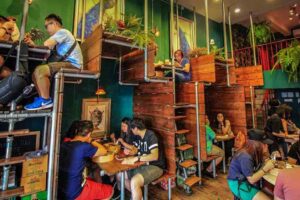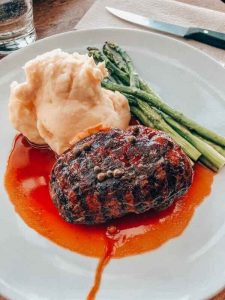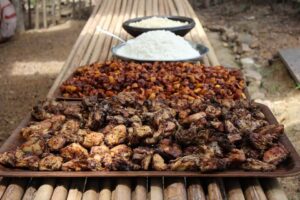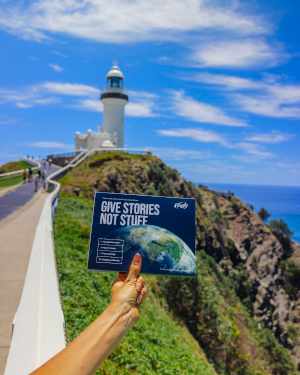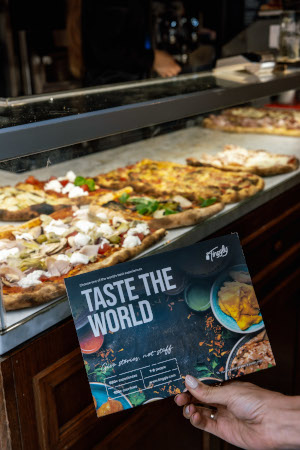Ever had this happen? Travelled on holiday to a new city and after a fun day sightseeing, dropped into that famous café or bar and got stumped looking at the bar drinks list.
Yep, that’s happened to me. What should I taste here? What drink is famous in this city? What’s on the list of top 10 drinks you absolutely must taste in this culture?
There are so many beverages on the list of popular alcoholic drinks to try in different destinations that you’re spoilt for choice. So a little bit of research about popular drinks at bars, cafes, and restaurants goes a long way.
And thankfully, over 50 famous bloggers have done that research for you firsthand. Here’s what to order in different cities across the globe, from the best alcoholic drinks to try in Havana, Cuba to must-try alcohol-free drinks like tea or sago in other countries.
So let’s see what’s in glasses around the world. Cheers!
1. Daiquiri in Havana, Cuba
By Talek from Travels with Talek
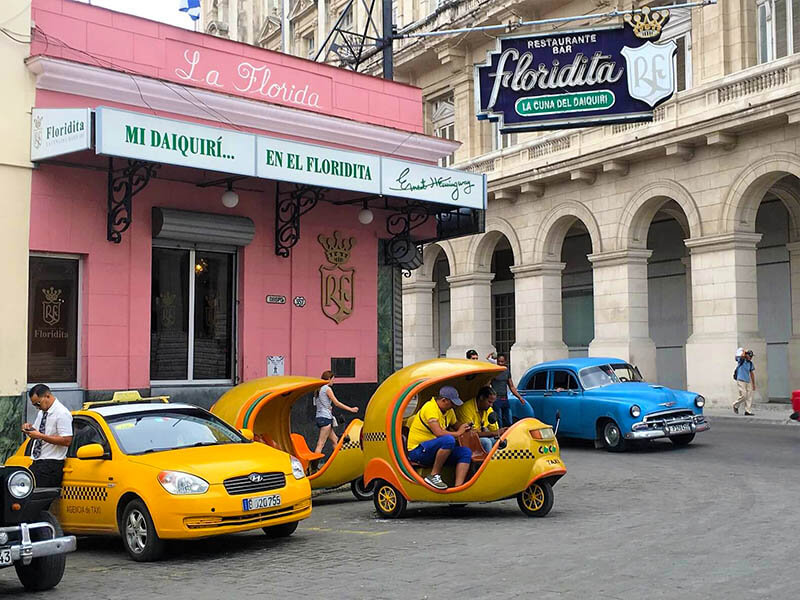
By Talek from Travels with Talek
Few cocktails conjure up the city of Havana like the daiquiri. Although rumored to have originated in the El Floridita bar in Havana’s old city, it was in fact invented in Santiago de Cuba, the country’s second city on the far side of the island, in the tiny mining town of Daiquiri.
Like many fabulous creations, the daiquiri was invented out of necessity when a mine company official needed cocktail ingredient to offer drinks to his visiting friends. He grabbed some readily available rum, lime, mint and a bit of sugar and mixed them together. The result was an instant success.
A colleague took the drink recipe to his friend’s bar in Havana, El Floridita, where the owner, Catalan immigrant Constantino Ribalaigua, knowing a good thing when he saw it, refined the concoction into what we recognize today.
The drink was further immortalized when Ernest Hemingway discovered it at El Floridita and consumed it near daily. Today a bronze statue of Ernest Hemingway sits at the original El Floridita. Established in 1817, El Floridita bar is one of the oldest continuously operational bars in the world.
Many famous people have followed Hemingway and enjoyed a daiquiri in El Floridita including, Ava Gardner, Frank Sinatra, Babe Ruth, Ezra Pound and others. Today it is a great place to chill at the bar with your own daiquiri in a classic Old Havana environment.
Salud!
2. Canchanchara in Trinidad, Cuba
By Talek from Travels with Talek
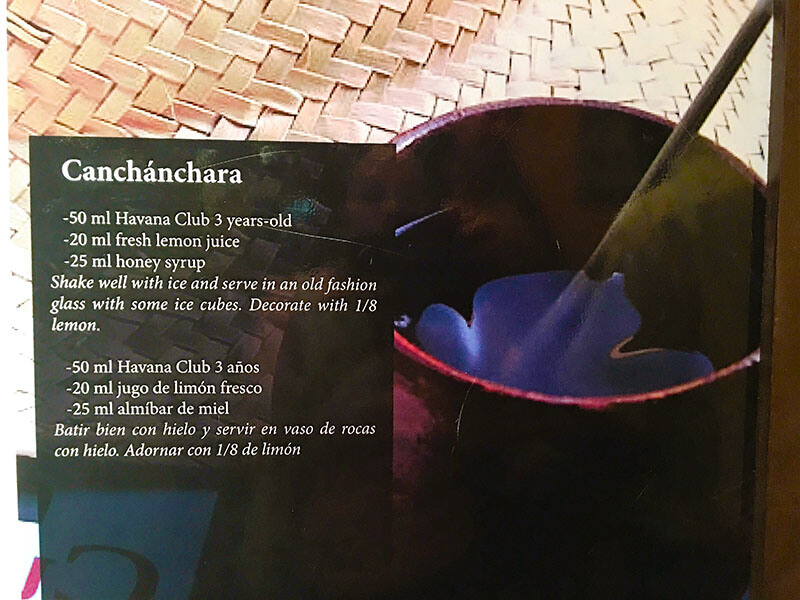
By Talek from Travels with Talek
Cuba has an amazing collection of tasty Cuban cocktails with fascinating histories. The canchanchara is just one of them.
The canchanchara is a drink regularly associated with the colonial city of Trinidad in central Cuba. In fact, most people believe the canchanchara originated in a tavern of the same name in Trinidad, as that’s where the drink is most popular.
However, much like the mojito, a rum and lime concoction of Cuban origin that was originally used as a medicine for sailors and soldiers suffering from scurvy, the drink has a different origin.
It originally came to eastern Cuba as a medicinal remedy used by Cuban soldiers fighting for the war of independence against Spain in the late 1800s.
The soldiers drank the canchanchara warm. It was believed the mixture of honey, lime and rum protected against chills and respiratory diseases that were so prevalent at the time. Just like the original mojito, the popularity of the rum-based drink grew as people consumed it whether they felt ill or not.
It’s easy to see how the city of Trinidad is so associated with the drink. The city, a major tourist destination, has restored a 1736 colonial mansion and named it The Canchanchara.
Tourists congregate in the mansions lush, green patio to listen to music, take dancing lessons and sample the drink, now served cold and in clay pots.
It is a pleasant place to raise a glass to the city’s charm and say salud! with a canchanchara in hand.
Salud!
3. Bloody Caesar in Montreal, Canada
By Rebecca from May be this Way
A Bloody Caesar is very similar to a Bloody Mary, except instead of tomato juice, it is made with clamato juice (clam-infused tomato juice).
At its simplest, a Bloody Caesar contains clamato juice, vodka, hot sauce, lime and Worcestershire sauce. The glass has a salt rim and is served with a celery stalk – perfect for mixing!
It might seem like an odd mix to have clam juice in a drink, but in the right proportions, this drink is salty and spicy in all the right ways.
It was created in Calgary but has become known as a Canadian cocktail, especially around brunch time. As Montreal is super keen on its brunches, this is the perfect place to enjoy tasting a Bloody Caesar!
If you want to go all-out with a fancy Caesar, the Montreal restaurant L’Gros Luxe popularized topping the drink off with appetizers like onion rings and mini sliders. Or head to Lucille’s Oyster Dive for a Bloody Caesar topped with seafood.
Santé!
4. Poitín (Potcheen or Poteen) in Ireland
By Eoin from Dollys Quest
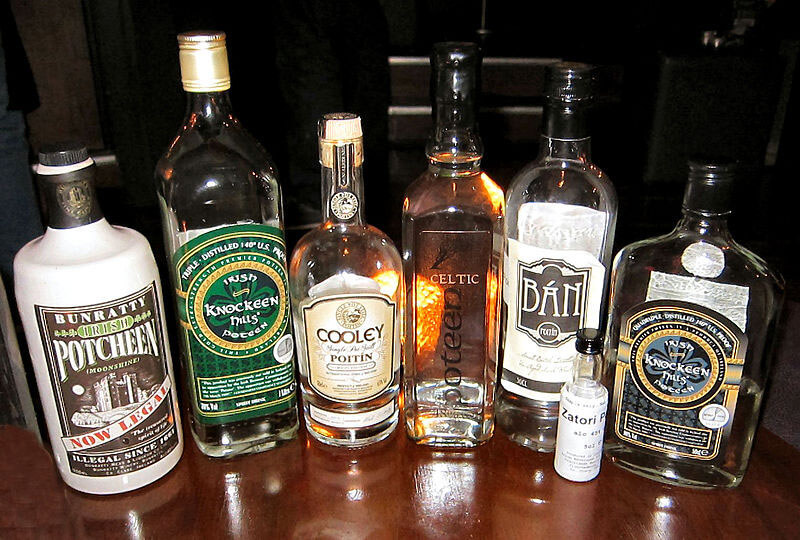
Pic by Ethan Bentley, from Wiki Commons CC BY-SA 3.0
Poitín is a home brewed alcoholic spirit famous in Ireland because of its notoriety and strength. Made form a variety of ingredients including cereals, grain, whey, sugar beet, molasses, its most famous popular distillation is from potatoes.
A law passed in 1556 made forced the distillation of potín underground and it has existed in this way ever since. It is possible to buy branded Poitín, but locals will argue that only the home-brewed concoctions are the real things.
If you would like to try a branded version simply check out any number of off-licenses, however, for the home-brewed version you will have to make friends with a few locals.
Not everyone has a bottle lying around at home, but in more rural locations you will have a higher chance of coming across a bottle.
For a country which is famous for its alcohol, trying to have a sip pf Poitín is a must for any visitor and hopefully one you will remember.
Sláinte! (Good Health)
5. Herbata góralska (Warming Mountain Tea or Polish Highlander Tea) in Poland
By Joanna from Over here
Herbata góralska is known among foreign tourists as Polish Highlander Tea. It is especially popular in Polish mountains. Cold days in Polish mountains are long – autumn starts early and winter usually drags on until April.
In fact, there might be snow in high mountains even in June and then fall again in September, so highlanders and tourists visiting those regions need to have a warming drink. And here comes herbata góralska to the rescue!
This lush drink consists of a high-quality black tea, splash of rum, honey, lemon juice, cloves and ginger. Depending on the region, some highlanders add also orange slice, raisins, cinnamon, or even a few grains of red pepper.
This drink is very rich and fulfilling, and it is loved not only by chilly people. Such lavish tea is perfect for long winter evenings when people want to cheer up. It can also be used as a remedy for cold, or a relaxing drink after a whole day spent on a trail. It relaxes sore muscles, so it is favoured especially by hikers.
Na zdrowie!
6. Kalimotxo or Calimocho (Coke and red wine) in Spain
By Chris from Becoming A Digital Nomad
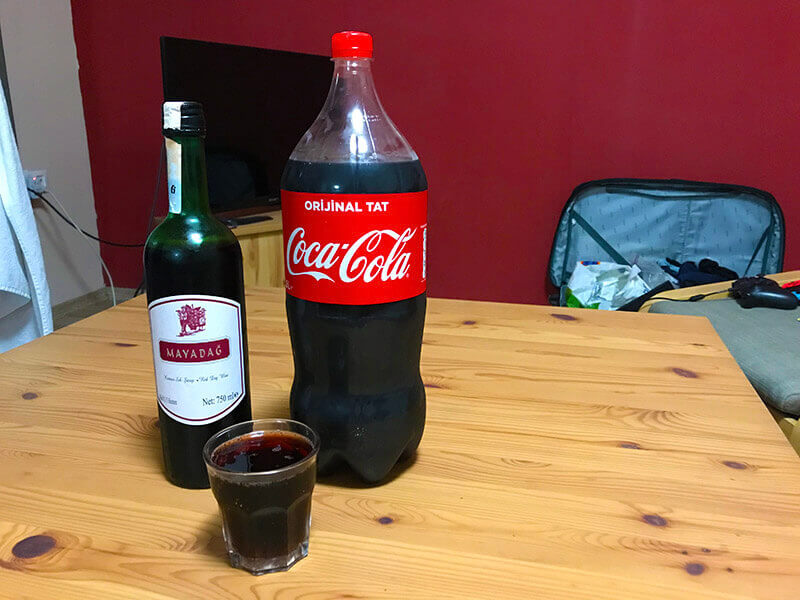
By Chris from Becoming a Digital Nomad
Red wine and Coke — on paper, these two beverages sound like they should never go together. Have a little faith as you mix Coke and red wine in equal portions in whatever glass you have handy.
The result is a dark red concoction that’s sweet, yet dry. The Coke’s cloying sweetness is balanced out by the red wine’s bitterness, and these two complex tastes come together in an unexpected way.
The best part is that this isn’t some exotic, complex cocktail that can only be made by bartenders. It doesn’t require some difficult-to-find liquor. It’s literally just equal parts Coke and red wine.
I’m drinking one right now in Istanbul with Turkish wine. Is it much different than the drinks I enjoyed in Spain? I’ll need… um… more research… to know for certain 🙂
It’s commonly found in Spain’s Basque country, but it can also be found in several countries throughout Eastern Europe.
Arriba, abajo, al centro y adentro — Up, down, towards the center, and down the hatch.
7. 막걸리 (Makgeolli or Korean fermented rice wine) in South Korea
By Marie from Be Marie Korea
The traditional alcoholic drinks in South Korea are quite different from other countries. Yes, South Koreans drink beer, but the consummation of soju and makgeolli is more popular.
Soju is a clear liquor similar to sake from Japan and makgeolli is a milky white rice wine. It is sweet and sparkling with an alcohol percentage of 6 to 8 percent. It is made in big traditional pots and is served in a bowl instead of a glass.
Makgeolli is best drank together with Korean snacks like pancakes, fish, fruits or other nibbles.
When visiting Korea trying makgeolli is a must! You can easily find it in any convenience store, but the best makgeolli is served in restaurants where they home-brew it.
There are multiple places in Seoul and the rest of Korea that specialize in makgeolli but my personal favourite is The Slowbrewpub. They have different branches all over Korea.
If you become a real Korean rice wine lover you can easily start to brew this at home as many starter kits are available online.
건배 (Kombae)
8. Cuban Coffee in Havana, Cuba
By Ayngelina from Bacon is Magic
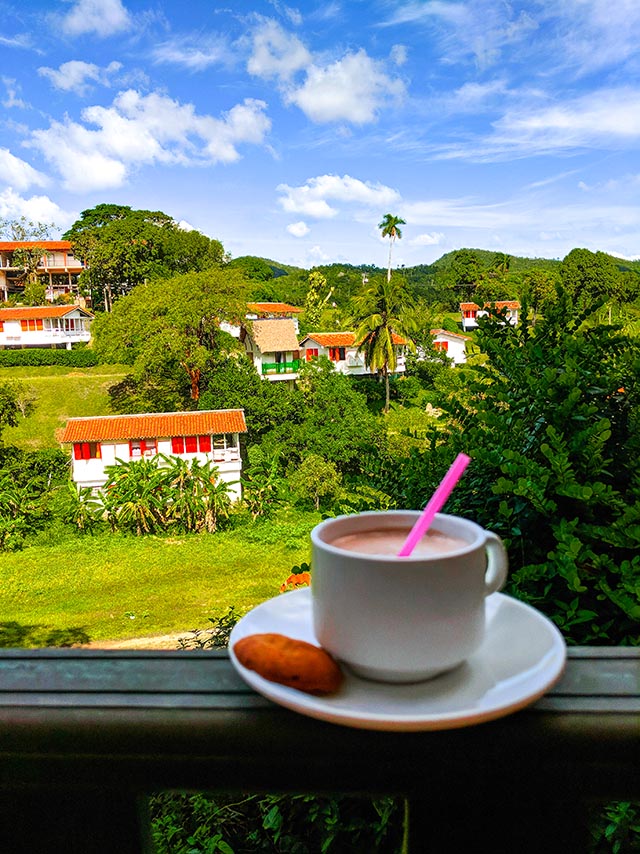
By Ayngelina from Bacon is Magic
Cafe Cubano is simply a Cuban coffee, and is most what like we know as an espresso. It is made in an Italian designed Moka pot and every Cuban house has one.
When you visit anyone’s home the first question is if you would like coffee. Even if it is their last bit of coffee grounds they will offer it to you because that is the core of hospitality and socializing in Cuba.
Cuban coffee must be strong and it must be very hot. While many tourists drink expensive Americanos in Cuba for 2-3 dollars, Cubans often pop into cafeterias to take a shot of coffee standing up for 4-8 cents.
However, one coffee shop in Cuba that has an amazing view is Cafe Maria in Las Terrazas, just a couple hours outside Havana on the way to Vinales. You cannot beat the view of the cafe that looks out onto the mountain range.
She has excellent Cafe cubanos and if you’re willing to splurge you’ll want to get Café Las Terrazas, which is a refreshingly cold coffee with milk, cacao liquor, chocolate and ice.
Salud!
9. Real Ale in London
By Julianna from The Discoveries Of
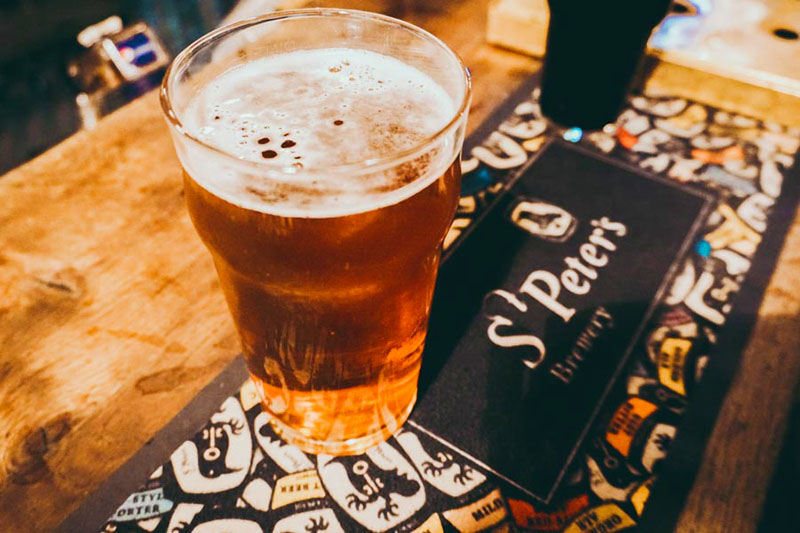
By Joanna from The Discoveries Of
Love it or hate it, everyone has to try a pint of ale at least during their time in London. From London to Lincolnshire, us Brits are well-known for their love of beer and particularly our love of ale.
So what is a real ale? CAMRA (the Campaign for Real Ale) describe them as traditional draught cask beers produced in a traditional manner and poured without any gas being added.
Ales are brewed by breweries large and small across the country but London’s a great place to try it, thanks to the number of microbreweries and pubs dedicated to showcasing great ales dotted across the capital.
You can get great ales pretty much anywhere in the capital, but I’d recommend going to an area with a lot of good pubs and going on a mini-pub crawl to try a few.
The pubs in Farringdon fit the bill nicely. Start with a drink from the St Peter’s Brewery at The Jerusalem Tavern and then make your way to Ye Olde Mitre, one of London’s cutest ye olde England pubs.
Cheers!
10. Atsukan or Hot sake in Kyoto, Japan
By James from Travel Collecting
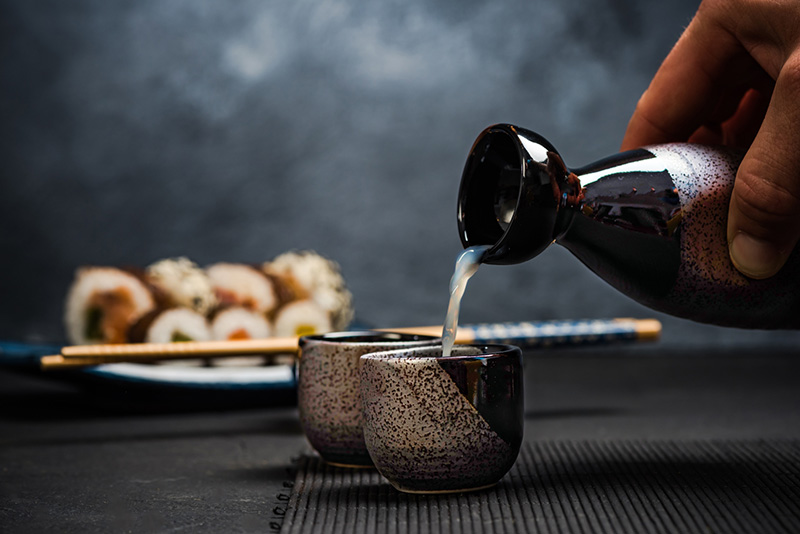
By James from Travel Collecting
Sake, a potent rice wine, is Japan’s national drink. It can be served ice cold or room temperature, but my favorite is atsukan – hot sake. It is especially popular in winter, but when I lived in Japan, I drank it year-round.
It’s served at about 50 °C (122 °F) and the combination of scalding hot liquid and fiery alcohol create a delightful burn. It’s drunk in tiny ceramic or stone cups and served from small stone flasks called tokkuri, which help keep it warm.
Like so much in Japan, there are specific customs associated with it. You should never pour your own drink – instead, fill your companions’ cups, and they will fill yours. Then touch your cups together and say kanpai!
The cups are small enough to down in one (large) mouthful, though if you prefer to sip it, that’s OK too. It is potent stuff, and after sitting on the floor at low tables, standing up can be a wobbly experience.
Atsukan is available in most restaurants, but my favorite are izakaya, which are traditional Japanese bars, where you are seated at low tables or counters, and you order small plates of food along with your drinks. Nibblies and hot sake are the perfect way to spend a fun night (or two) in Kyoto.
Kanpai! Or Cheers!
11. 港式奶茶 – Hong Kong-style milk tea in Hong Kong
By Queenie from Ms Travel Solo
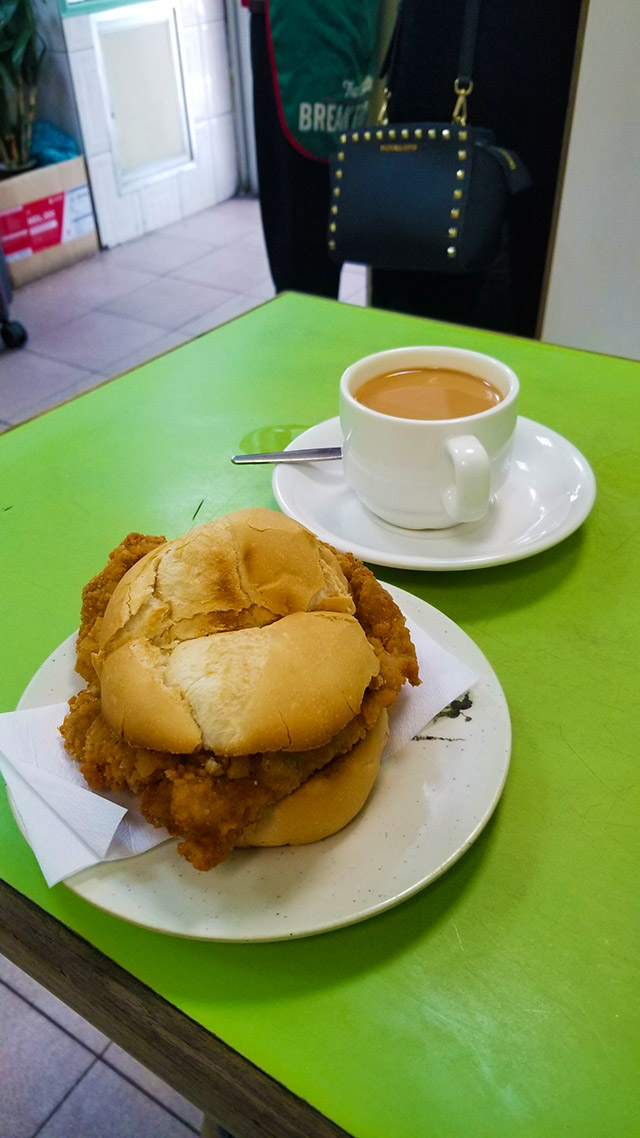
By Queenie from Ms Travel Solo
Hong Kong-style milk tea is a huge part of the tea culture in Hong Kong. It is made with black tea and evaporated milk or condensed milk. Instead of drinking coffee in the morning, people of Hong Kong will have milk tea.
The richness of the tea has to do with the process of making the tea. The key is to use a sackcloth bag to strain the tea leaves. It is said the filter mechanism makes the tea smoother and tastier. It is a must-try beverage in Hong Kong!
You can find Hong Kong-style milk tea at any Hong Kong cafes, also known as cha chaang teng (translation: tea restaurant). They serve the best Hong Kong cuisine, which is a fusion of Cantonese food mixed with British influences and other Asian flavours.
Otherwise, you can easily find milk tea at convenience stores in a can or as a boxed drink. And they taste just as good as the ones freshly made.
Drinking milk tea is very common and an everyday occurrence that there is no particular cheer that goes with tea culture.
12. 珍珠奶茶 – Bubble Tea in Taiwan
By Queenie from Ms Travel Solo
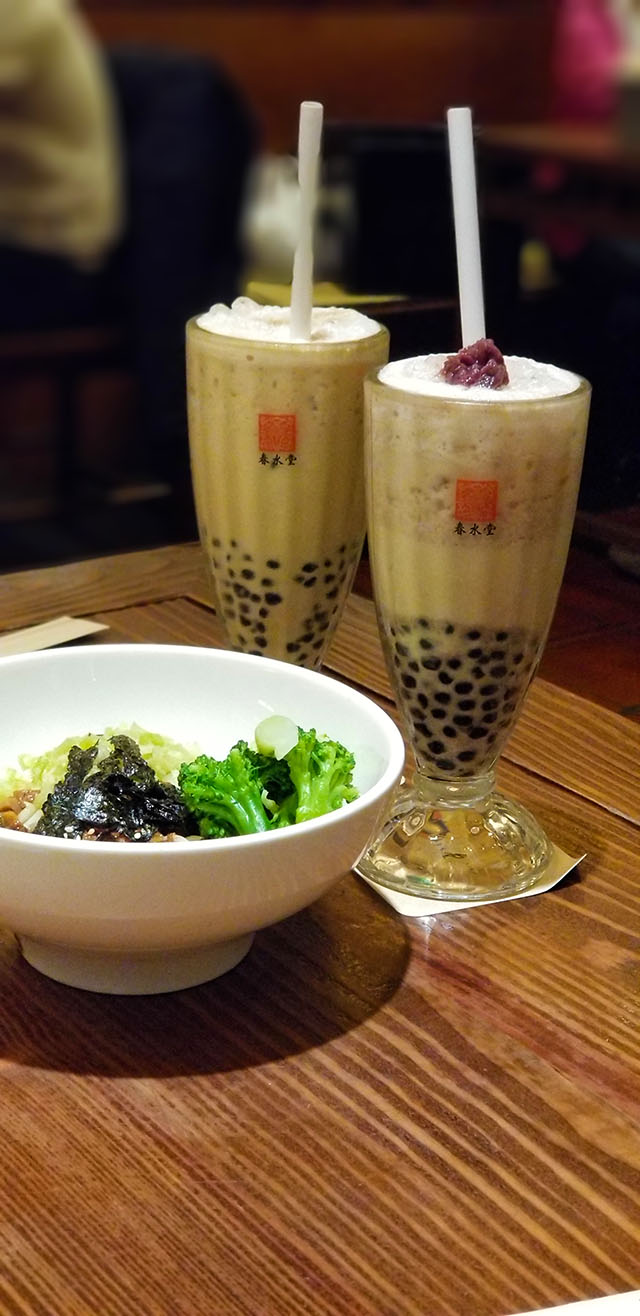
By Queenie from Ms Travel Solo
Bubble Tea is a popular Taiwanese drink made of iced milk tea and chewy tapioca “bubbles” at the bottom. Typically, the tasty beverage is made-to-order and is sipped through a thick straw that is made specifically for it.
Originated from Taichung, Taiwan in the 1980s, it has become a worldwide phenomenon. Not only can you find bubble tea shops all over Taiwan, but you can also find bubble tea in the U.S., Canada, Australia, and parts of Europe.
People call the drink bubble tea, pearl milk tea, boba tea, etc. But doesn’t matter what you call it, it is so delicious! Once you try one, you will want more!
The original bubble tea flavours are made with either black or green tea, with or without milk, and of course, with tapioca.
Since the inception of the tasty tea, many variations have been added to the original flavours. You can find bubble tea made from fresh fruits, in a frozen slushie and you can even add toppings like milk pudding to your drink.
Whatever flavour you decide to try, I know you will love this tasty treat!
Bubble tea is so good that it doesn’t require a particular saying to say “cheers” or “drink up”. It’s too bad because it would be great to have a funny saying for such a fun drink!
13. Limoncello around Amalfi Coast in Southern Italy
By Lori from Travlinmad
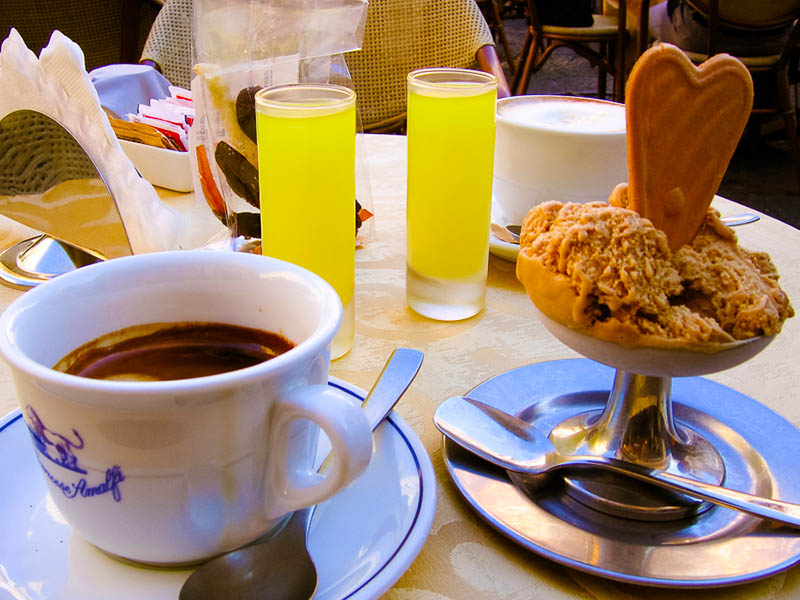
By Lori from Travlinmad
The sun shines bright in Southern Italy along the Amalfi Coast lending that extra dose of Vitamin sea to the temperate climate that’s needed to grow local citrus fruit.
In fact, the Sorrento lemons used to make it grow to the size of grapefruit. With so many lemons, it only made sense that Italians chose not (so much) to make lemonade but rather Limoncello, the refreshing and delectably sweet liqueur that ends every meal.
Limoncello is made by infusing alcohol with the skins of lemons (only the zest, never the pith), steeping them for weeks or even months to impart as much lemon oil and flavor as possible.
A little sweetness is added, and in some cases a creme consistency, and you have a wonderful concoction that’s not only delicious but aids in digestion after a meal as well. And in Italy, that’s always a good thing.
You’ll find limoncello at nearly every restaurant and just about every household their own supply on hand. Many restaurants in Naples, Sorrento, and the Amalfi Coast offer it gratis to their guests, as a sweet parting gift.
It’s also very simple to make your own limoncello. I make some every year around the holidays, and it’s always the favorite gift of my family and friends because it comes from my heart with love.
Salute!
14. Kimad in Bombay, India
By Abby from The Winged Fork and Abby’s Plate
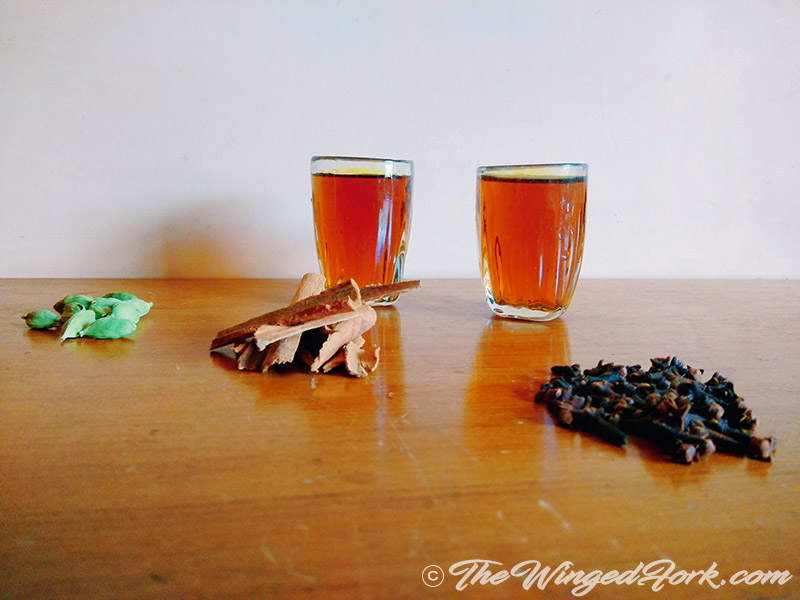
By Abby from TheWingedFork
Quite similar to mulled wine or brandy, the East Indian kimad is a mixture that keeps you warm on those cold nights. This warm drink made with country liquor has spices such as cinnamon, cloves and cardamoms in it. And more importantly a little bit of sugar and tea.
It tastes just like floating on warm clouds in heaven or some say like fire in your bones. Of course, that depends on who made the kimad and which base liquor they used in it.
But if you are ever in Bombay, and you happen to stumble across an East Indian, get yourself invited over to their home for a drink of kimad and some lush-tasting sorpotel or moilee. Nope you won’t find it in stores!
Sukhala! (East Indian for ‘To happiness’)
15. Sourtoe cocktail in Dawson City, Yukon, Canada
By Micki & Charles from The Bare Foot Nomad
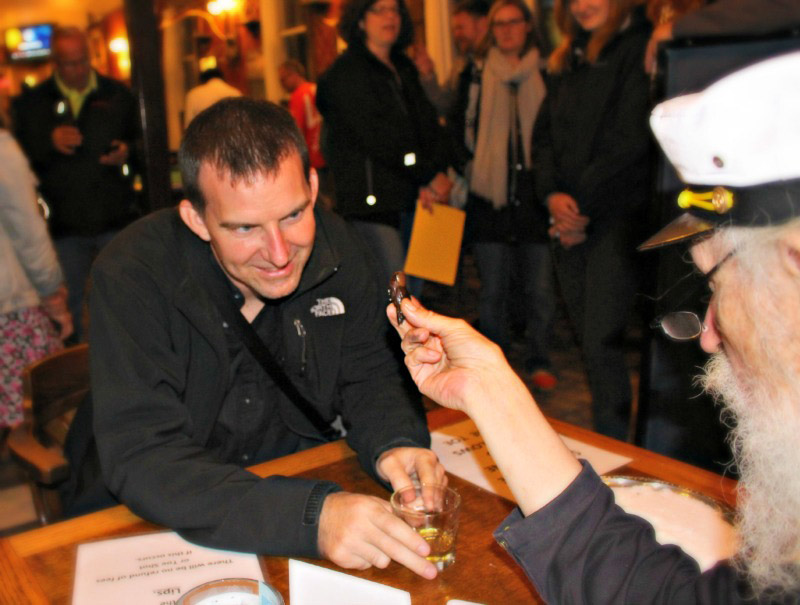
By Micki & Charles from The Bare Foot Nomad
The Sourtoe Cocktail can only be found in the Sourdough Saloon in the Canadian gold mining town of Dawson City. Typically served with a shot of rum (you can choose a different alcohol if you prefer), it’s defining feature is a real dehydrated human toe in it.
The back story goes like this: In 1973, after Captain River Rat found a well preserved severed human toe from an illegal rum runner from the 1920’s preserved in some vintage rum, the captain dared someone to drink the rum.
A weird tradition started and, with over 100,000 members, it’s practically a right of passage when traveling through this remote town in Canada’s Yukon territory.
Though it’s illegal to swallow the toe (there’s actually a hefty fine if you more than kiss the toe), more than 10 toes have been donated over the past 40 years to keep the tradition going.
Sourdough Saloon in the Downtown Hotel in Dawson City, Yukon, Canada
To drink, first you have to pledge the ‘Sourtoe Oath’ and then remember the most important rule: “You can drink it fast, you can drink it slow, but your lips have gotta touch the toe.”
16. Vermouth in Girona, Spain
By Amber from Only in Costa Brava
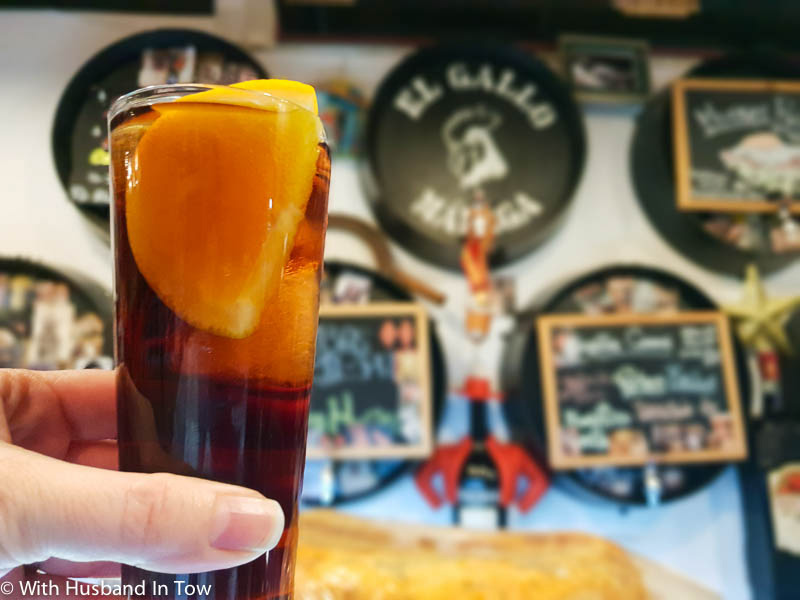
By Amber from With Husband in Tow
Vermouth is an integral part of life in Spain. So much so that one does not drink vermouth, one “takes a vermouth.” Part alcoholic drink, part medicinal remedy, vermouth is commonly consumed or “taken” prior to a large meal to open the stomach.
Unfortunately, this delicious herbal beverage doesn’t have the best reputation outside of Spain, often presented only as a mixer for negronis, martinis, or Manhattans, and never drank neat.
In Spain, vermouth, either white (blanco) or black (negre) is usually served on the rocks with either a slice of lemon, orange or even an anchovy stuffed olive. Served on a hot summer day with a side of boquerones (anchovies) a proper vermouth is the perfect way to beat the heat and a must try.
One of the best things about traveling to Girona and around the Catalan region of Spain is the chance to “take a vermouth” at El Vermutet in the Girona Old Town. They are rarely open, so if walking by and they are open, stop in. You might not get another chance.
Salud!
17. Sherry in Andalucia, Spain
By Amber from With Husband in Tow
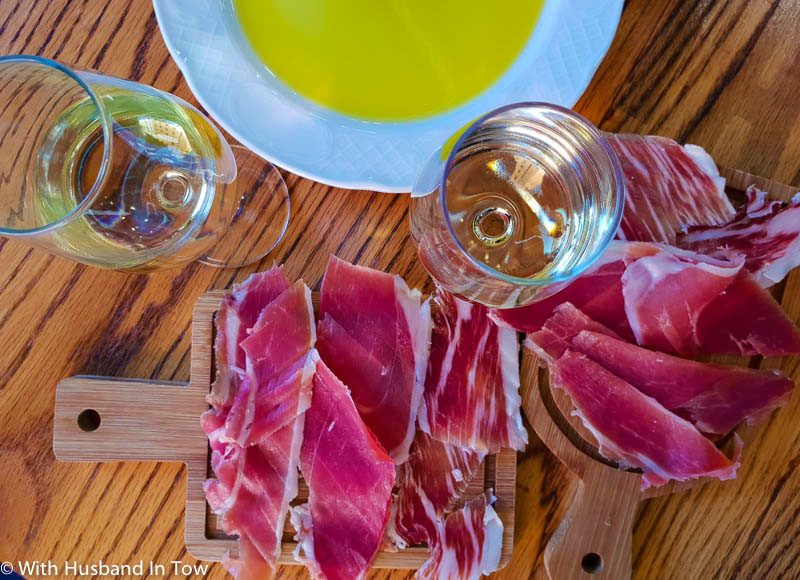
By Amber from With Husband in Tow
In the heart of southern Spain, lies the region of Andalucia and its iconic beverage, sherry wine. Sherry is produced in the Sherry Triangle outside of Sevilla, an area stretching down to Jerez.
Ranging from the super sweet Pedro Ximenez, to the driest of dry wine, Fino, sipping sherry in Andalusia is the perfect way to spend an afternoon at one of the many bars serving tapas in Sevilla.
What is probably most surprising is the variety of sherry. Most people associate sherry with sweet dessert wine, which would be the Pedro Ximenez. But the dry sherry called Fino is a white wine, so white it is almost translucent. It’s also so dry it doesn’t even taste like wine.
It’s an acquired taste but pairs perfectly with a slice of jamon, the Spanish cured ham. Perhaps one of the most famous fortified wines, sherry wine dominates the drinking culture throughout Andalucia.
While in Sevilla order a Fino at least once and give it a shot.
Salud!
18. Italian espresso in Italy
By Kate from Our Escape Clause
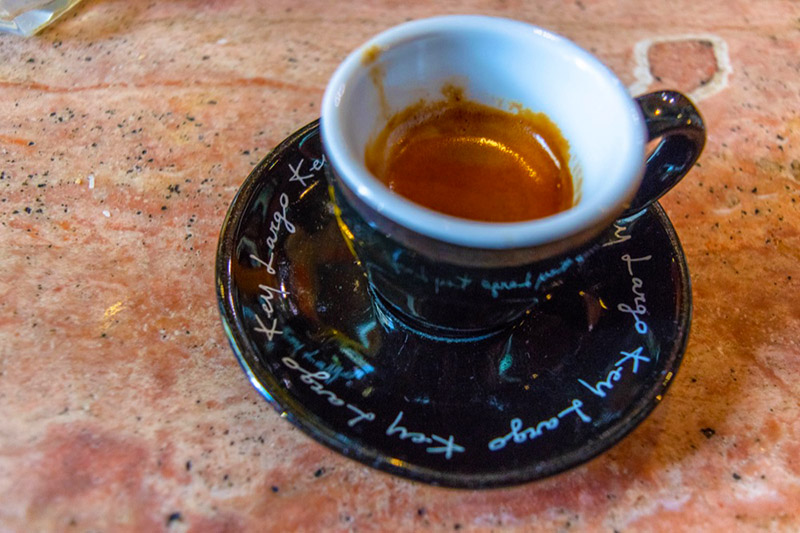
By Kate from Our Escape Clause
No food-centered trip to Italy could ever be considered complete without a visit to one of Italy’s many coffee bars where the drink of choice is quite simple–un caffè, or in English, an espresso.
While there are a few coffee varieties on the menu in the many bars and cappuccinos are popular in the morning, espresso is the truly iconic drink in Italy, whether it’s for an afternoon pick-me-up, a digestif after lunch, or simply for the joy of dropping into the bar while walking by.
If you want to drink your espresso the way the Italians do, order at the counter and stand to drink–not only will you pay less that way as opposed to taking a table, you’ll also be taking part in an essential ritual of Italian life.
You don’t exactly need to offer a toast with espresso, but if you and your companion want to give each other a clink of the glass before downing some of the world’s best coffee.
“Saluti” is the Italian way to say “cheers!”
19. Absint or Absinthe in Prague
By Linda from Retired and Travelling
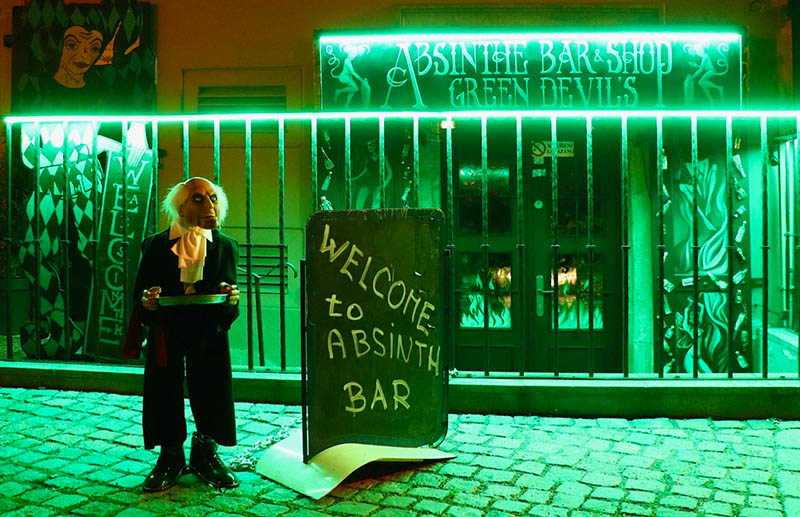
By Linda from Retired and Travelling
You can’t visit Prague without a visit to an absinth bar. We first saw the Green Devil’s Abinsth Bar lit up with green neon at night. Absinth is known as the “green fairy”. And this bar was decorated inside and outside with green fairies and other interesting characters.
Even if you don’t try the absinth, the shop is a fascinating place to visit. But the absinth process is not to be missed.
The absinth was poured in a glass and placed under a special container that dropped cold water one drop at a time. As each drop hit the absinth, the drink turned green and became more milky. This is the louche effect.
The added water made the absinth much smoother to drink. We tried a couple of different absinth brands to see the difference in quality. Absinth is definitely a drink to try when you travel to Prague.
It’s best to have it at the Green Devil’s Absinth Bar.
Na zdraví! (Cheers in Czech)
20. Cava in Barcelona, Spain
By Christina from Explore Now or Never
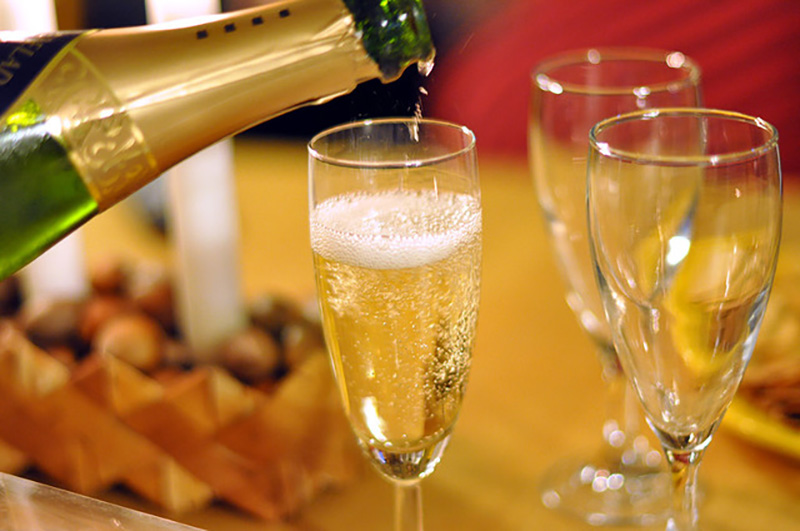
Pic by Cyclonebill from Wiki Commons CC BY-SA 2.0
Think of Cava as a sort of Spanish champagne. It’s a sparkling wine almost exclusively produced in the Catalonia region, where Barcelona is the largest city.
We first tasted it on a Barcelona food tour where it was served with a platter of flavorful homemade sausage drizzled with honey. (Yum!)
Cava—which is available—either “blanc” (white) or rosé (pink) has been made since 1851. That’s when corks were invented, to keep bubbles from escaping the bottle.
The inventor of Cava was traveling Europe when a visit to (and taste of) Champagne in France got him wondering about the Spanish potential for a similar drink.
And when a plague destroyed most of France’s Champagne grapes shortly after the debut of his new wine, Cava shot to popularity.
Today, Spain produces nearly a quarter billion bottles of Cava using mostly Macabeo, Xarel-lo and Parellada grapes, although the roses are made with Pinot Noir, Garnacha or Monastrell grapes.
Like other types of wines, Cava runs from very dry (“sec”) to quite sweet (dolce).
Salud!
21. Sangria Wine in Spain
By Christina from Explore Now or Never
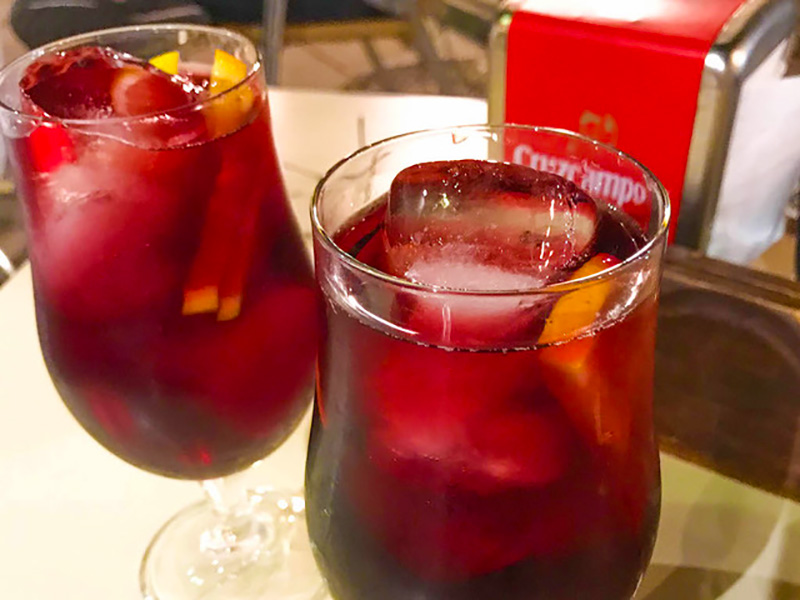
By Christina from Explore Now or Never
Sangria is Spain’s famous wine punch. The most famous version around the world is red Sangria, which is typically made with Tempranillo or other Rioja wines (although white wines can be used as well).
The wine is then mixed with a simple syrup (i.e. sugar) and an abundance of fresh diced fruit. Think apples, oranges, peaches, and more. A cinnamon stick offers a bit of complexity in the pitcher.
Even the Greeks and Romans mixed their wine with sugar and spices back in the day for a Sangria-like beverage. Since there was no way to sanitize water, wine was a safer way to avoid bacteria.
Today, it’s more often tourists than locals that imbibe Sangria throughout Spain. (Spaniards love to mix up a pitcher of lemonade and beer to share with friends on a scorching summer day! It’s better than you might think.)
Still, we loved sipping Sangria throughout our two weeks in Spain on hot, hot days. In fact, Americans have been loving Sangria since it was first introduced to New Yorkers at the World’s Fair in 1964!
Salud!
22. Pisco Sour in Peru
By Alex from The Lavorato Lens
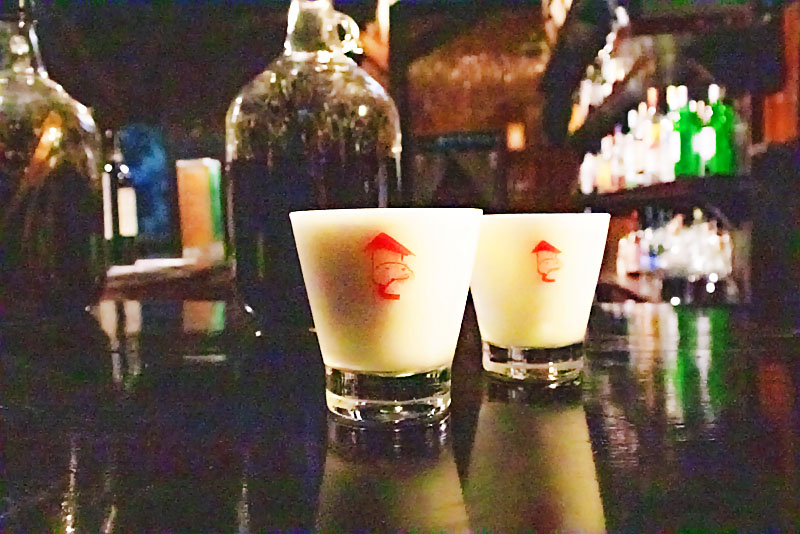
By Alex from The Lavorato Lens
The Pisco Sour is a local drink in Peru, and is definitely a must-try if you are there!
In fact, Pisco is the national spirit of Peru, and the Pisco Sour is the national drink, although you will be able to find many drinks with Pisco in them. (I never saw it called anything other than Pisco Sour!)
It is a light, refreshing drink, made with Pisco, citrus, egg whites, and bitters, and we enjoyed it on hot evenings in the rainforest, as well as in Lima (and just about everywhere else we went!).
Our favorite place to drink the Pisco Sour was at the bar at the Grand Bolivar in downtown Lima. At the Grand Bolivar, you can get a regular Pisco Sour, or if you are feeling bold, or just really like them, you can get the Cathedral, which probably amounts to 2.5 of their regular-sized Pisco Sours.
The Grand Bolivar has a bit of history, itself, as this is where Earnest Hemingway spent many nights, and is even rumored to have drank eight Cathedrals in one sitting.
We enjoyed sitting on the balcony and people watching the street below. The hotel is located just off of the main square in the downtown area, which was very nice to see at night. We really enjoyed all of the Pisco Sours we had, though!
Salud!
23. Springbokkie in South Africa
By Mariza from Hoponworld
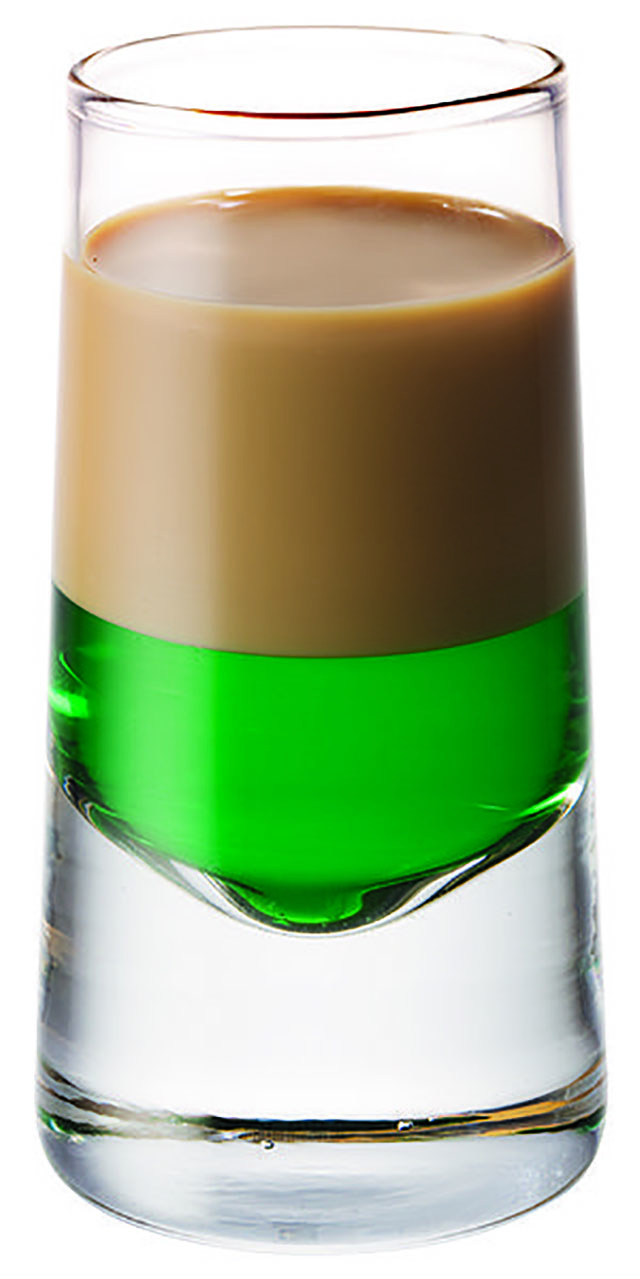
Pic by Lorienkee from Wiki Commons CC BY-3.0
If there is anything South Africans love more than a “braai” (Afrikaans for barbecue) or potjiekos, it’s watching rugby. As proud winners of the Rugby World Cup twice, it’s no surprise that there’s even a shooter resembling the national team’s jersey colours – green and gold!
Ask any South African which shooter represents South Africa the best (especially during rugby season) and the answer will undoubtedly be a “Springbokkie” (little Spingbok).
So, what on earth is a Springbokkie?
A springbokkie is a shot made from only two ingredients – peppermint liquer and Amarula. It might not sound very intriguing, but trust me, it’s delicious! With just the right amount of minty-ness finished off with velvety Amarula cream, one sip will leave you wanting more!
No visit to South Africa would be complete without trying a Springbokkie!
So clink those shot glasses and try your best to pronounce the tongue-twisting “Gesondheid!” (“Ge-sund-hate” – cheers in Afrikaans)!
24. Horchata in Valencia
By Or from My Path in the World
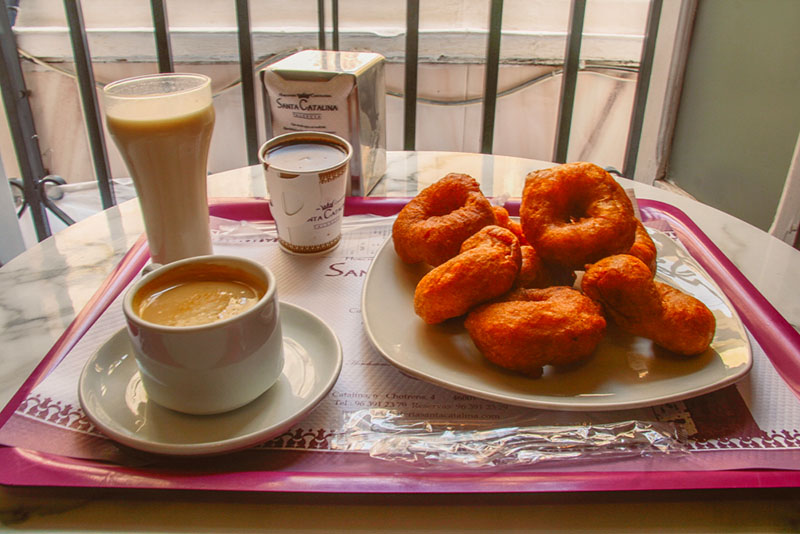
By Or from My Path in the World
If there’s one thing you must do in Valencia is trying one of the local drinks, the horchata (or orxata in Catalan). It is a cold, non-alcoholic beverage made of dried and sweetened tiger nuts.
Thanks to its pleasant sweetness and texture, the Spanish King James I of Aragon declared horchata as “pure gold” (or at least that’s what the legend says).
It is also usually served with fartons which are sweet pastries glazed with sugar. During the local festival, Las Fallas, you’ll probably see people ordering buñuelos (a type of doughnuts) with it.
You can find this delicious drink in several cafes in Valencia, but one of the most iconic places to have it is at Horchateria Santa Catalina (Plaça de Santa Caterina, 6). Depending on when you’re visiting Valencia, you might see a long line waiting to get in, BUT don’t let that discourage you.
This place is huge and the staff works so well that you’ll get in within a couple of minutes.
Salud!
25. Bourbon in Louisville, Kentucky
Bourbon, an old-fashioned cocktail
By Jessica from One Girl, Whole World
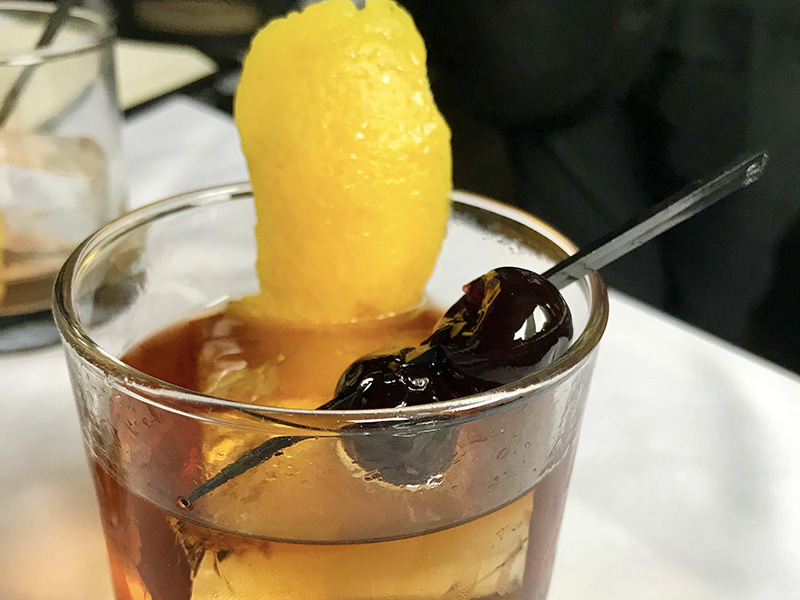
By Jessica from One Girl, Whole World
If we’re talking about drinks of the world, we have to talk about the official spirit of the United States—bourbon whiskey.
All bourbon is whiskey, but not all whiskey is bourbon. Declared “America’s Native Spirit” by Congress, it has to be made in the United States to have the name, and 95% of it is made in the state of Kentucky.
It’s said there are more barrels of bourbon here than people!
If you haven’t tried bourbon, you definitely have to give it a taste. The grain recipe and way it’s aged in new barrels help give it a slightly sweeter, complex flavor that appeals to a lot of people. It also makes a great cocktail, which brings us to the old-fashioned.
Originating in the 1800s in Louisville, the old-fashioned claims to be the original cocktail. It’s endlessly versatile but simple at its core—whiskey (usually), sugar or simple syrup, bitters, and sometimes some fruit (either muddled or garnished).
You can find the old-fashioned at almost any bar in Louisville, and finding your favorite is part of the fun!
Where to have it: Just about any bar…here are some of my favorites.
“Cheers!”
26. Rakomelo or Hot Raki with Honey in Greece
By Tiffany from A Girl and Her Passport
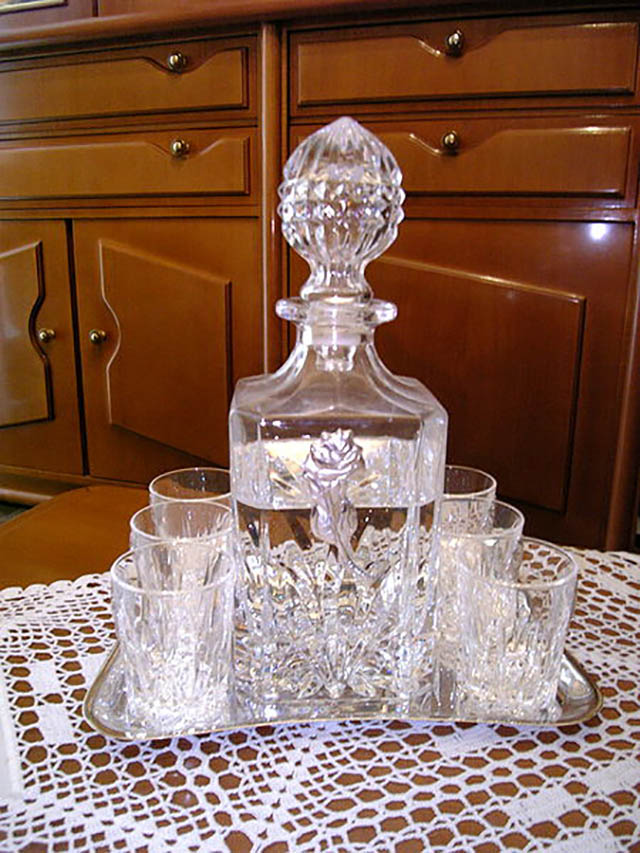
Pic by Georgios Pazios, from Creative Commons CC0 License
Rakomelo is the traditional winter drink in Greece. It is commonly offered if you are not feeling well also. Rakomelo is made from Raki and honey made warm. Raki is a liquor made from grapes.
While you can have Raki cold, I recommend it Rakomelo. The honey helps make the drink sweeter and being served hot helps keep you warm on a damp Greek evening. Rakomelo is a must try as it is a traditional Greek drink and it has a unique taste.
If liquor is difficult for you, ask them to make you a small one. Sometimes Raki is served as a post-dinner drink on the house and I am sure that if you ask, the Greek restaurant will make you a Rakomelo instead. They will be impressed you knew what to ask for!
Yamas! (Cheers in Greek)
27. Ginjinha or Cherry Liqueur in Lisbon
By Wendy from The Nomadic Vegan
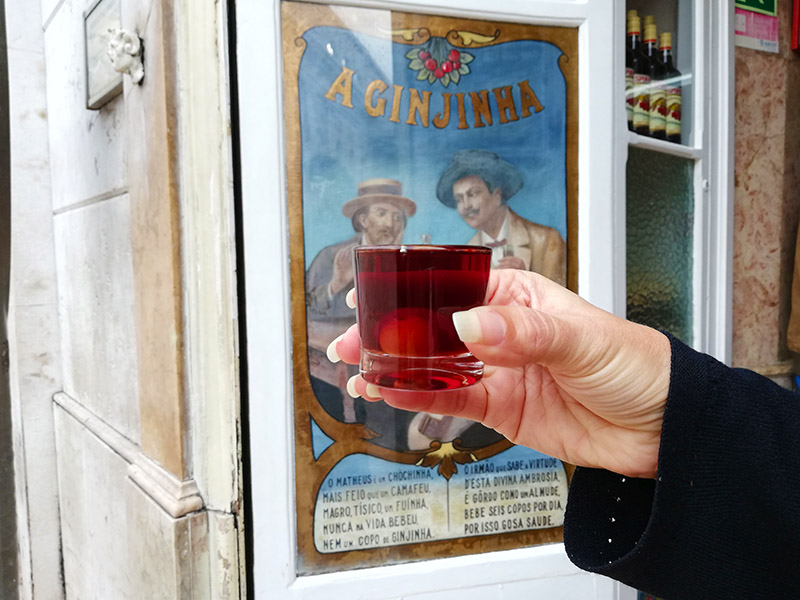
By Wendy from The Nomadic Vegan
Ginjinha is a sweet liqueur made from the Morello cherry, which is called “ginja” in Portuguese. You’ll find it for sale at many Lisbon restaurants, bars and kiosks, but the best place to taste it is at a tiny, standing room only bar in São Domingo square called A Ginjinha.
This was the first place to sell the liqueur commercially, and the same family has been running the bar for five generations. They sell nothing but ginjinha, and they do a roaring trade with locals and tourists alike. Since there are no seats, people mingle outside the bar while they sip on their ginjinha.
The drink is served in a shot glass with a couple of Morello cherries at the bottom. When you’ve finished your drink, you can eat the cherries if you like. They soak up a lot of alcohol, so they can be quite potent!
While the Morello cherries are fairly sour, the drink itself is sweet, as plenty of sugar is added during the fermentation process, along with cinnamon.
Where to Have it: A Ginjinha in Largo São Domingos, Lisbon
Saúde!
28. Bia Hơi or Fresh Beer in Hanoi Vietnam
By Nick from Wandering Wheatleys
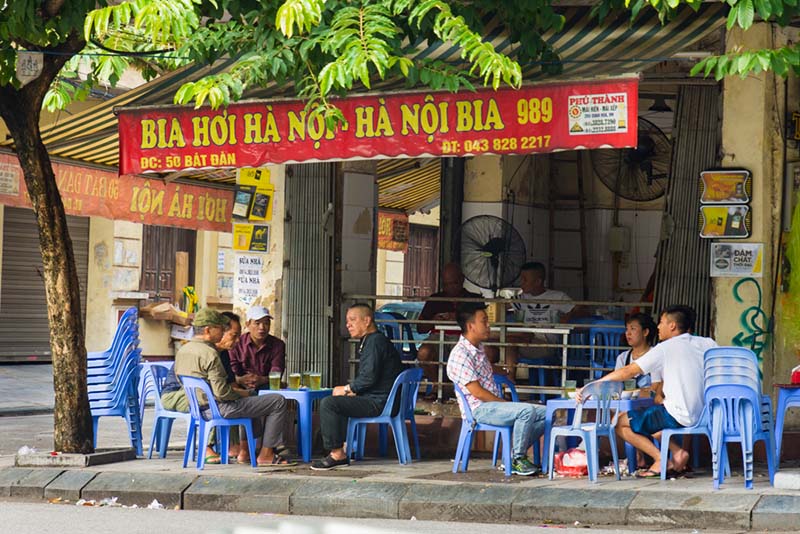
By Nick from Wandering Wheatleys
When visiting Hanoi, one experience you must have is sitting around on a street corner in tiny plastic chairs sipping endless glasses of cheap “bia hoi”.
A glass of bia hoi will typically cost you around 5,000 VND to 11,000 VND ($0.20-0.50 USD). It’s best consumed on a busy street in the mid-afternoon so you can watch Hanoi’s crazy motorbike traffic pass by; family’s stacked 3, 4, even 5 to a bike.
You’ll find bia hoi served all over Hanoi but our favorite place to drink it is at the corner of Bát Đàn street and Dương Thành street on the western edge of old quarter.
So grab a plastic chair and raise your glass of bia hoi… mot, hai, ba, yooooooo!
Cheers: Mot, Hai, Ba, Yo! (Translates to “1, 2, 3, Yo!”)
29. أتاي (pronounced “atay”) or Mint Tea in Morocco
By Wendy from The Nomadic Vegan
Mint tea is a huge part of life in Morocco and is drunk multiple times per day. It’s usually green tea, which is brewed with fresh mint leaves and plenty of sugar. As a visitor, you will be offered mint tea at every meal in Morocco, and perhaps several times in between.
As soon as a guest arrives at someone’s home, the first thing the host will do is boil a pot of mint tea. This is an essential show of hospitality that cannot be foregone.
When you’re shopping in the souqs, don’t be surprised if a carpet seller invites you to sit and have a cup of mint tea with him. Sure, it’s a way of warming you up for the negotiations to come, but it’s also genuine Moroccan hospitality.
When your glass starts to get empty, your host will refill it automatically. If you don’t want any more, wave your hand over the glass and say, “safi, baraka”, which means “Thanks, I’m done!”
The locals jokingly refer to mint tea as “Moroccan whisky”. Since Morocco is a Muslim country, alcohol is not openly consumed there.
بالصحة (pronounced “bsaha”) – Cheers!
30. Rooibos Tea in South Africa
By Mariza from Hoponworld
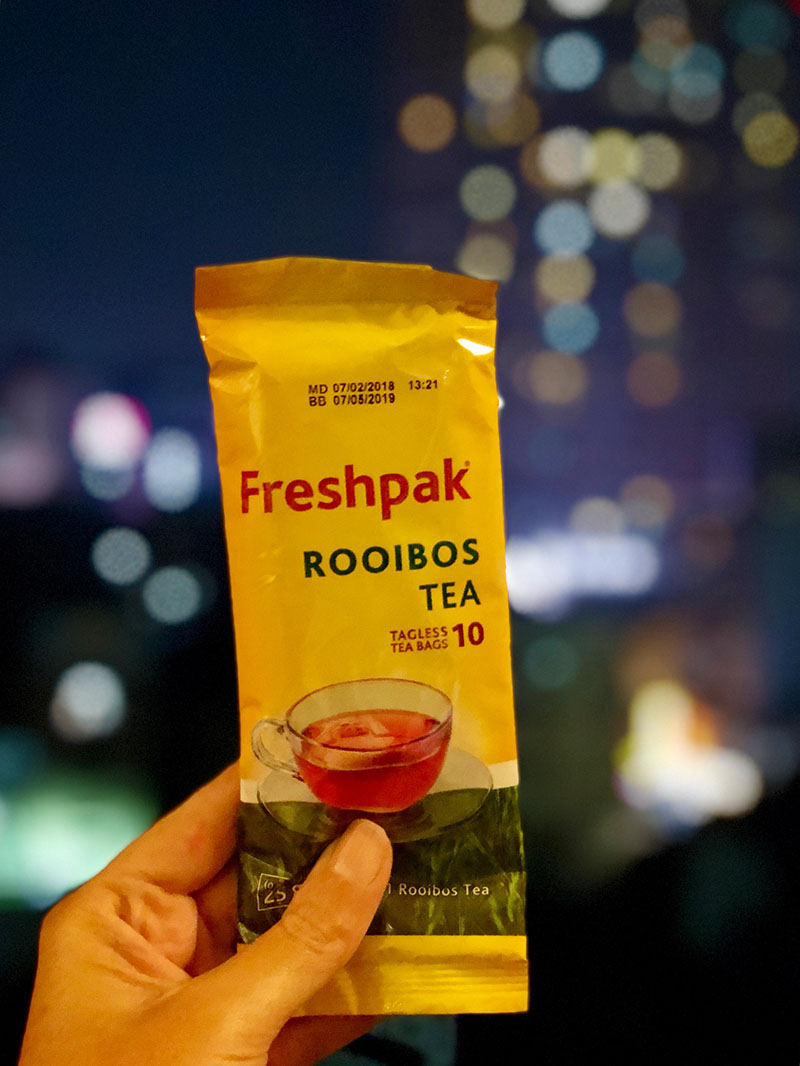
By Mariza from Hoponworld
The Cape, South Africa has something for everyone – beautiful beaches, diverse landscapes, gorgeous drives, fine wines and great food.
Even tea lovers will be delighted to learn that one of the best teas in the world – rooibos – is grown right here in South Africa’s Western and Northern Cape regions.
What really sets rooibos (also known as red bush or red tea) apart from other teas is that it’s packed with antioxidants and is caffeine-free.
Apart from its delicious earthy taste, rooibos is also great for your health! Benefits range from improving skin, bone and heart health to removing toxins and even improving your immune system.
The tea, which only grows in the Cederberg, Sandveld and Bokkeveld valleys, has been enjoyed by locals for generations and today, I can even buy a rooibos latte at my local teashop here in Taiwan.
Rooibos is great hot or cold, but generally we South Africans drink it hot with milk and sugar. If you are feeling a bit under the weather, nothing will have you feeling better in a jiffy like a hot cup of rooibos with some honey and a squeeze of fresh lemon juice!
If you haven’t tried rooibos tea yet, give it a try! And don’t forget to add it to your list of must-try drinks when visiting SA!
31. Pulque in Mexico
By Jessica from Unearth the Voyage
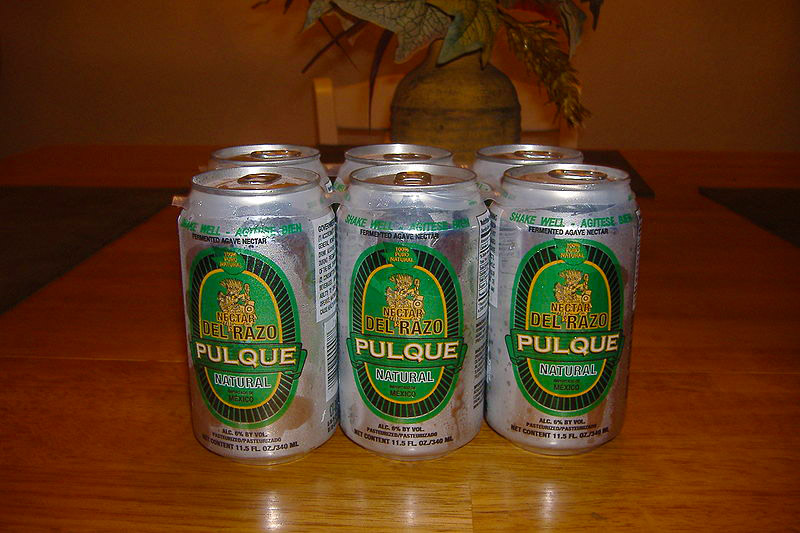
Pic by Kassper, from Creative Commons CC0 License
When in Mexico the number one thing you need to try in Pulque. Native to Mexico, Pulque is a milk-colored drink that is fermented from the sap of maguey (agave) plant. It is traditional to central Mexico and has a somewhat of a sour taste.
The history of Pulque actually extends back to the Mesoamerican period and was considered sacred! Only a certain class of people were allowed to drink it.
The original name is actually iztāc octli. Because of its rich history and somewhat good taste, Pulque has made a comeback and is found in a lot of bars throughout Central Mexico.
Also, since it is fermented, it has good probiotic properties and can help your microbiome by drinking it. If visiting Mexico City, there are a ton of Pulque bars to choose from! One of our favorites is Pulque Cathedral Salon Casino.
Salud!
32. شاي النعناع (Chai na na or Mint Tea) in Cairo Egypt
By Monica from Ahlan Monica
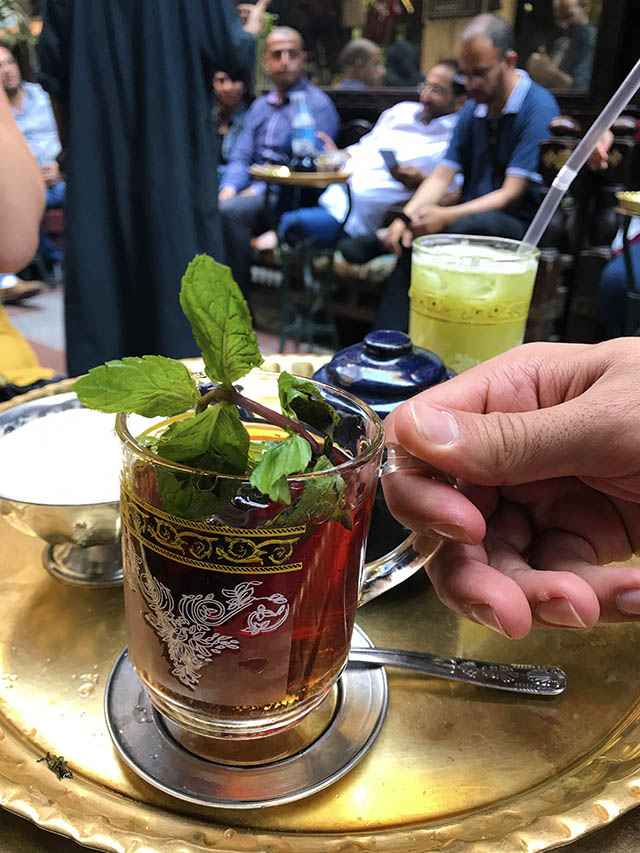
By Monica from Ahlan Monica
Oddly enough, hot mint tea is a refreshing drink to have even in the midst of the smouldering Cairene summer, it’s really an experience you must try when in Cairo.
Mint tea is best served in a local cafe (or ahwa), the most famous of which being El-Fishawy in the centre of old Islamic Cairo in the Khan El Khalili market. This iconic cafe is the perfect spot to take a seat and people watch and feel like you’ve been transported in time.
Sit in a narrow alleyway in the middle of the souk with sellers stopping by with their scarves, keychains, henna painting – you name it! Don’t be surprised if you see locals next to you filling up their small cups with spoon fulls of sugar, join them – even if it’s just one!
Fe Sehetak! (Arabic for Cheers!)
Related: Nubian Guest House called Bob Marley
33. Bruidstranen or Bride’s Tears in Amsterdam
By Jessica from Uprooted Traveler
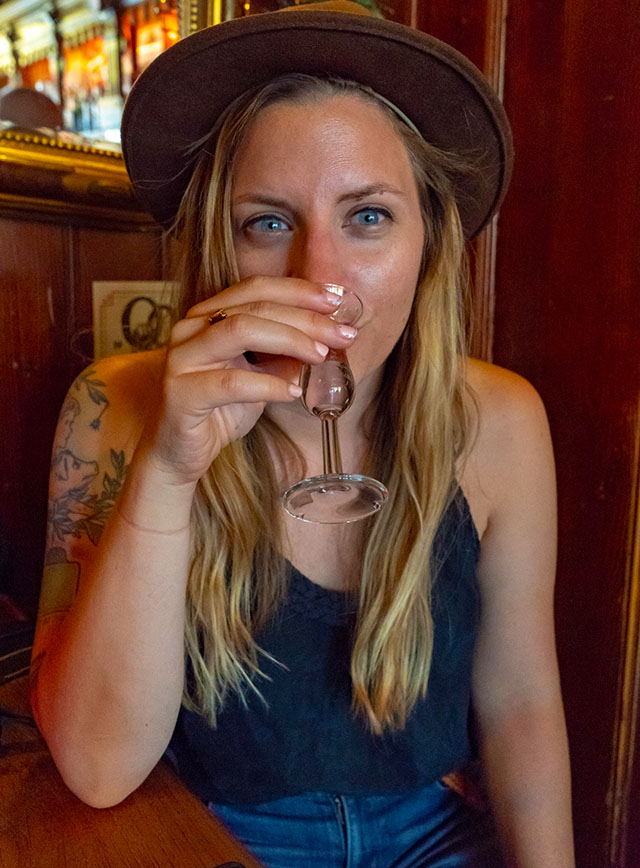
By Jessica from Uprooted Traveler
This 17th-century Dutch liquor was originally referred to as a “medicine” by the Dutch, due to the Protestants’ distaste for liquor and boasts a sweet and spicy taste, thanks to its composition which includes cardamom, cinnamon, cloves, ginger and anise, with a hint of citrusy zestiness.
Perhaps the most interesting ingredient, however, is the gold flakes that will swirl around your slurpertje (traditional Dutch tulip-shaped drinking glass), which are meant to mimic the tears of a bride on her wedding day- both tears of happiness to be joining her husband in matrimony, as well as tears of sorrow for leaving her familial home.
Traditionally, this spirit was served to all attendees of a wedding and whenever the couple drinks this liquor after their nuptials, it is supposed to be a reminder of the husband’s marital vows to his wife.
While you’re in Amsterdam, this drink is a must try as not only is it delicious and includes 24 karat flakes of gold, but it also has “medicinal” properties (or at least, that’s what the 17th century Dutchmen said!). What’s not to like?!
While you can get Bride’s Tears at lots of bars to visit in Amsterdam, you can’t go wrong with the ever- charming Proeflokaal de Ooievaar, a tiny, ancient pub located on the ground floor of a delightfully crooked building. You can find Proeflokaal de Ooievaar at the very beginning of Zeedijk, adjacent from Centraal Station.
Proost!
34. Wiener Melange or Viennese Blend in Vienna, Austria
By Jacky from Nomad Epicureans
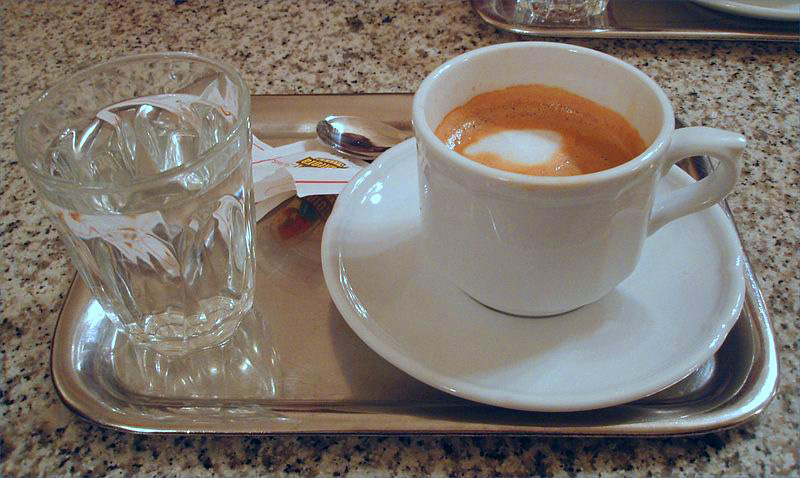
Pic from Wiki Commons CC BY-3.0-migrated
The Viennese Coffee House Culture has been listed as Intangible Cultural Heritage by the UNESCO and for a good reason. Nothing is as quintessentially Austrian as coffee.
Of course, Austria owes this piece of culture to the Ottomans who left behind several bags of coffee beans during the second Turkish siege in 1683. The first coffee house opened its doors in 1685 and dozens followed soon after.
At the turn of the century, the Viennese coffee house was a hotspot for literary and political discourse. Sigmund Freud, Gustav Klimt, and Arthur Schnitzler were only a few of the frequent visitors. What they all had in common was the drink they ordered – a Wiener Melange.
Essentially, a melange is just black coffee with a shot of espresso, topped with steamed milk. Very much like a cappuccino, although you would never order a cappuccino in a Viennese cafe.
It remains popular today especially due to its milder flavor. It is also always served with a glass of water on the side and goes wonderfully with a piece of apple strudel.
You can find a Melange anywhere in Vienna, but one of the best places is without a doubt Cafe Central!
Prost!
35. Akvavit in Scandinavia
By Megan from Meganstarr
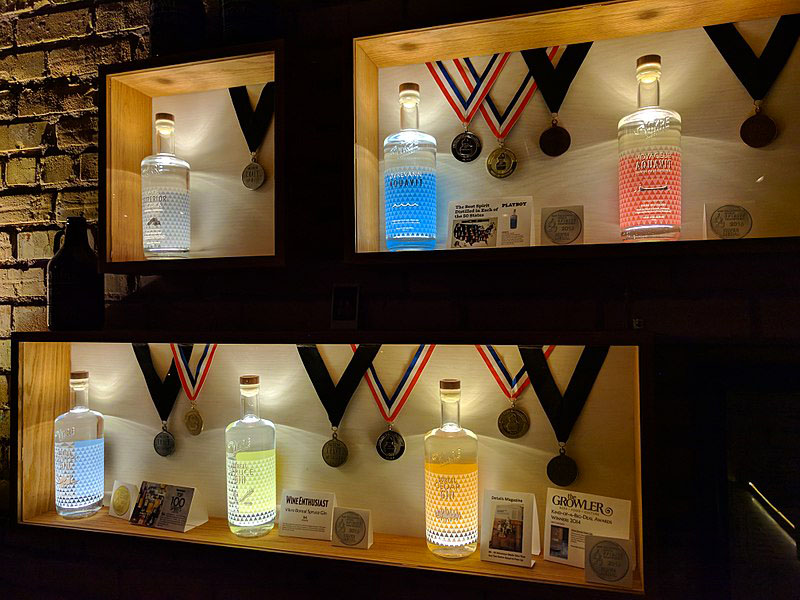
Pic by Duluth from Wiki Commons CC BY-SA 4.0
Akvavit is a spirit that is pretty ubiquitous in Scandinavia and is made from either grain or potatoes and is flavored with spices and herbs after, often with caraway or anise.
While it is found in pretty much all of Scandinavia, I think the best place to try aquavit, the spirit’s name in English, is in Bergen, Norway. There are many things to do in Bergen, but be sure to have a traditional Norwegian meal with a shot of Akvavit to ‘allow the fatty foods to go down easier’, as many Norwegians will say.
The earliest traces of Akvavit date back to around 1531 in Bergen at the city’s fortress and can be found far away all across the globe presently. The spirit has also made a name for itself in Minnesota and Wisconsin in the United States as the states are known for having a lot of citizens with Norwegian and Scandinavian ancestry.
Akvavit is now synonymous with celebrations in Norway… everything from Christmas to 17 Mayi, the Norwegian Constitution Day and biggest celebrated holiday in the country.
Be sure to try a shot for yourself when you’re there and don’t forget to say ‘Skål’, or ‘Cheers’ before downing it!
Skål!
36. Jugo de Borojó in Santa Marta, Colombia
By Daniel from Layer Culture
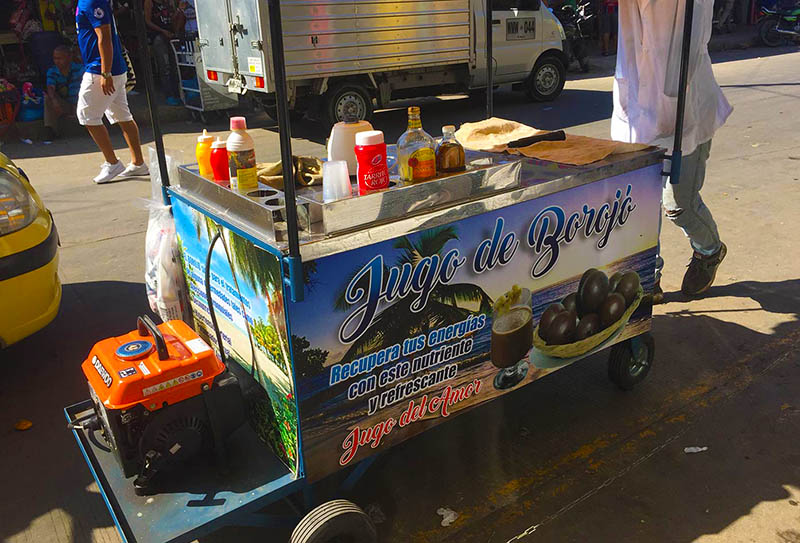
By Daniel from Layer Culture
In Colombia, you can find so many fresh juices made from exotic fruits that are exclusive to the county. There’s one drink though that really stands out amongst the rest. This particular drink is made from a fruit called Borojó, a small rounded fruit taken from a rainforest tree.
When this fruit is prepared and made into a drink it is considered an potent aphrodisiac, hence its name ‘Love Juice’. It is drunk by men and women as a natural source of energy which comes from the ultra-high concentration of vitamins and minerals.
Along with many other exotic Colombian fruits, the Borojó juice is sold in most Afro-Colombian restaurants and street vendors in the Pacific and Caribbean regions of the country.
The drink is prepared with the pulp of the Borojó fruit, milk, powdered milk and sugar. It can also be prepared with just water, sugar and ice. The fruit is so sour that sugar is needed to sweeten the taste.
37. Vin chaud or Hot Wine in Paris, France
By Elisa from World in Paris
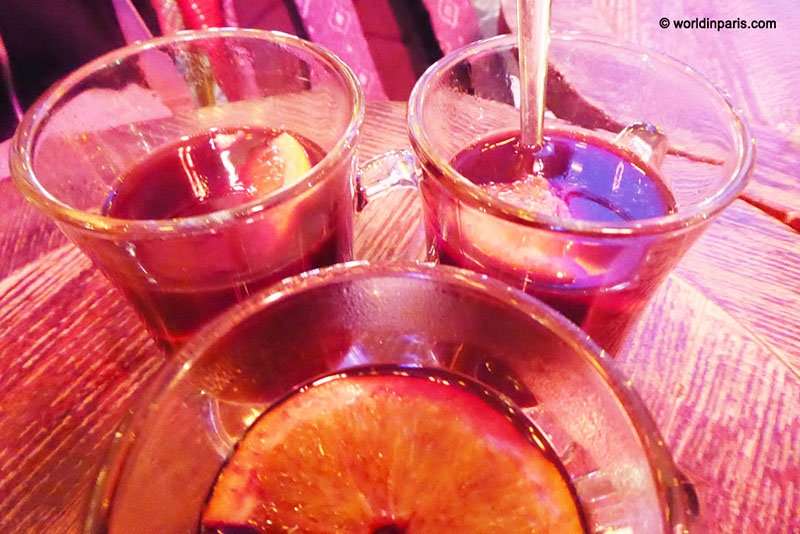
By Elisa from World in Paris
Drinking hot wine with friends is one of the locals’ favorite things to do in Paris in the winter. Le vin chaud (hot wine in French) is traditionally linked to Christmas in Paris and in France and it is very common to find stalls selling hot wine in the Christmas markets.
The truth is that a vin chaud is always a good idea, especially if it is too cold outside, and also a great excuse for meeting friends after work or during the weekend.
Hot wine is typically a sweet and spicy wine. Hot wine’s traditional recipe consists of red wine (Bordeaux, Bourgogne or Pinot Noir wines), sugar, a bit of lemon zest, a bit of orange zest, cinnamon, ginger and some other spices (usually the bartenders’ special touch).
Today, there are many variations of vin chaud, with weird tastes, but I prefer to stick to the traditional recipe.
Where can you find vin chaud in Paris?
Vin chaud arrives with Christmas markets in Paris such Champs Elysées Christmas Market or Saint-Germain Christmas Market, and the offer lasts until February in bars, cafe-terraces (usually warmed during winter time) and street food stalls.
Cheers, Santé!
38. Caipirinha in Brazil
By Cazzy from Dream Big, Travel Far
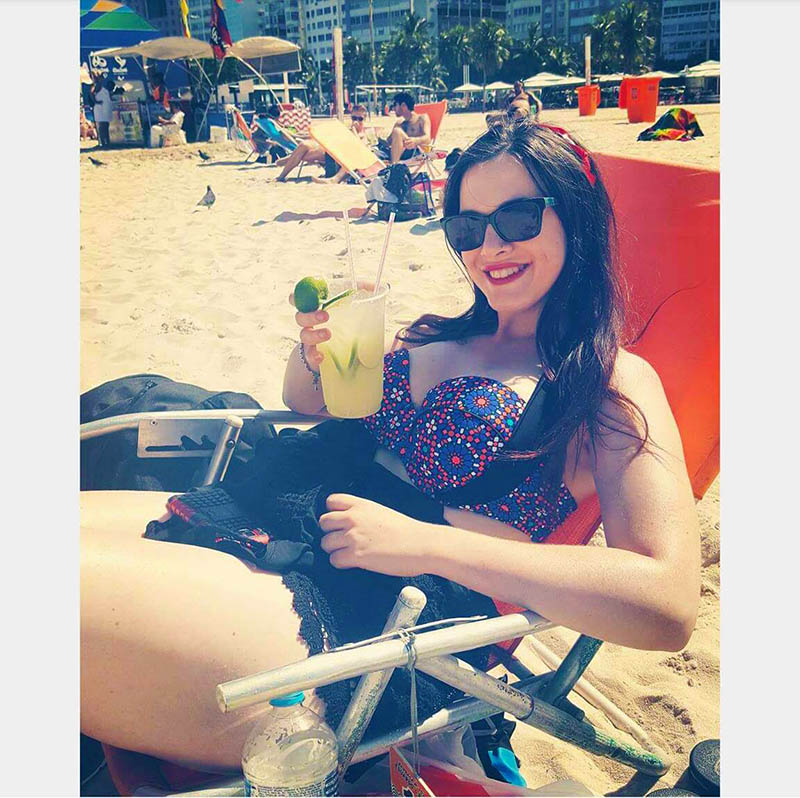
By Bradley & Cazzy from Dream Big, Travel Far
Known as Caipirinha in both English and Portuguese, it’s the national drink of Brazil and a fantastic one at that! It’s actually one of the most popular drinks in all of South America.
A caipirinha cocktail consists of Cachaça (which is hard liquor made from sugar canes), lots of limes, sugar and lots of ice: this is all mashed together and that’s it!
It’s a simple drink that’s delicious and very very strong. Brazilians drink it to party and when in Brazil you can find vendors selling it on the beaches in plastic cups, or just head to a local Samba night and the bars will be overflowing with Caipirinha. You can get other flavours of Caipirinha in restaurants or bars, and these tend to include strawberry, raspberry and mango flavours.
It’s the same drink but other fruits mixed in with the lime, sugar and ice. For me, there is no better than the original. After you’ve formed a love for Caipirinha, you’ll be pleased to know you can often buy Cachaça at your local liquor store to recreate the famous drink when at home.
As they say in Brazil; Felicidades!
39. Sago at Gulaman (Tapioca and Gelatin) from the Philippines
By Yamy from Gofamgo
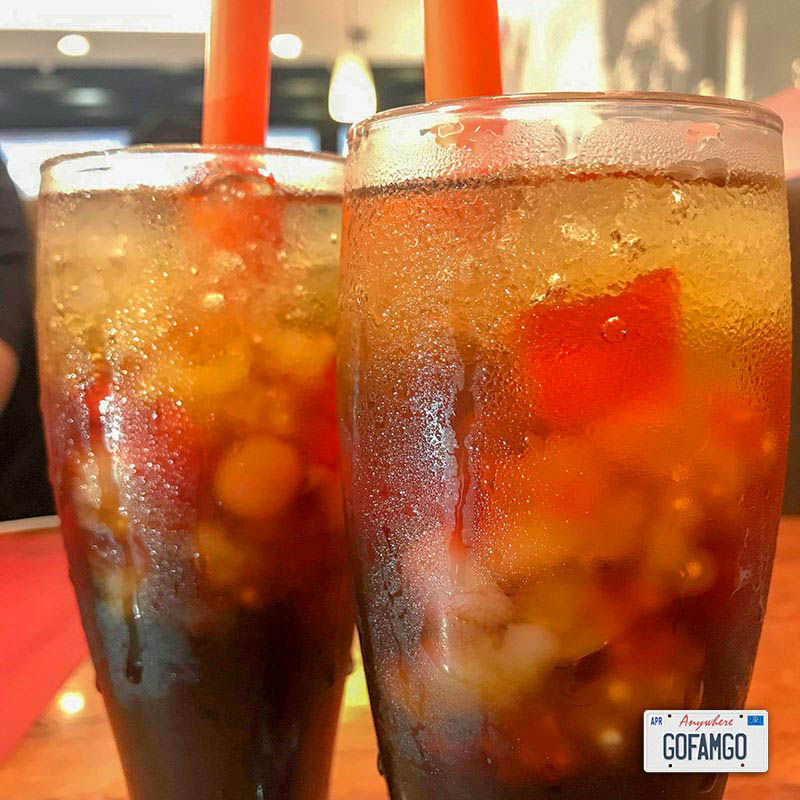
By Yamy from Gofamgo
In the humid tropical climate of the Philippines, chilled beverages called samalamig or palamig are almost a requirement to survive the heat. Lamig is the Filipino word for cold or chill.
Commonly sold by vendors alongside delicious and numerous Filipino street food, samalamig are typically sweet, have jelly pearls or fruit chunks in them. You can easily spot them in huge gallon jars on food carts. Aside from being easily available, they are also relatively cheap.
Sago at Gulaman is the most common type of samalamig in the Philippines. The name refers to the main ingredients of the drink, which are sago (tapioca) pearls and gulaman (agar) jellies.
The drink is usually made with brown sugar and pandan leaves. Pandan is an aromatic plant used in South Asian cooking. If pandan should be unavailable, you can use vanilla or banana extract.
It is an easy drink to make even at home. Otherwise, you can try it in restaurants that serve Filipino cuisine like Max’s Restaurant which has franchises in Canada and in the USA. Sago at Gulaman is a great way to quench your uhaw (thirst), especially on a summer day!
Samalamig kayo dyan! (Come get some chilled drinks – often yelled by vendors to entice customers)
40. Taiwan Only 18 Days Draft Beer
By Mariza from Hoponworld
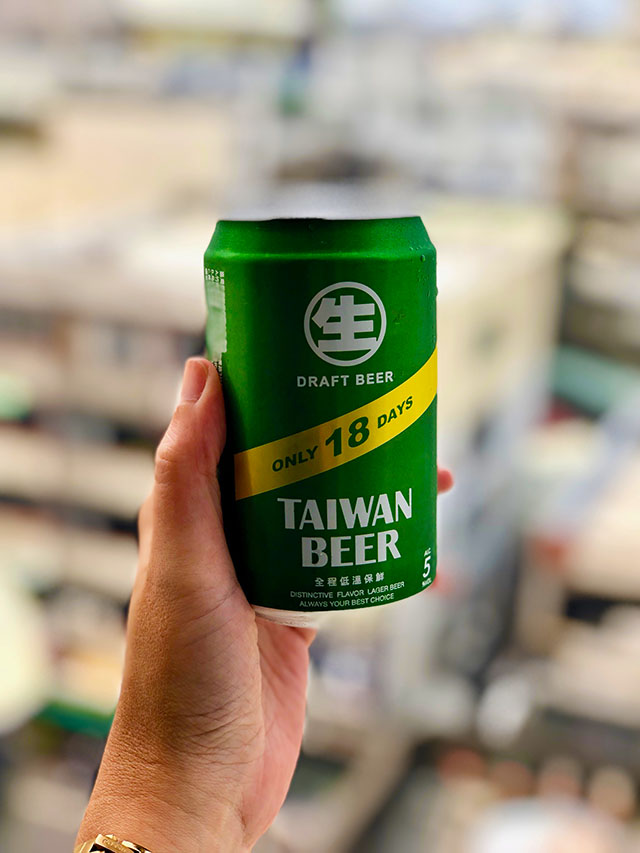
By Mariza from Hoponworld
Have you ever tried a beer that expires after 18 days from its production date? Well, if you are headed to Taiwan, you can!
Taiwan 18 Days Draft Beer is one of the most popular beers in Taiwan. And for good reason. Not only is it fresher than other local beers (since it only lasts for 18 days), it’s also very cheap.
You can pick up a can for just over NT$40 (USD$1.2) at most supermarkets in the country. And just in case you were wondering – it’s actually not illegal to drink on the street in Taiwan.
In fact, it’s not uncommon to see locals mingling in front of convenience stores or even over a game of Mahjong (a traditional Chinese tile-based game) in the parks whilst enjoying their favorite beer.
Unlike it’s sister beer, Taiwan Beer (the national beer), 18 Days Draft Beer is not as easy to find. Generally, you can find beer and most hard liquor at mom and pop shops, restaurants, supermarkets and even the 7-11 here in Taiwan.
But, because 18 Days Draft Beer expires in less than 3 weeks, you are likely to only find it at local Chinese restaurants, bars and chainstore supermarkets.
It is sold in cans at supermarkets, but expect to find it on tap or in bigger bottles (600ml) at restaurants and bars. The beer is very refreshing, so it’s a great compliment to Taiwan’s often spicy and salty food! To be completely honest though, Taiwan 18 Days Draft Beer might not be the best beer you’ll ever drink, but it is still worth a try on your first visit here!
乾杯! (Gān bēi)
41. Herbes de Mallorca (Catalan) or Hierbas Mallorquinas in Mallorca, Spain
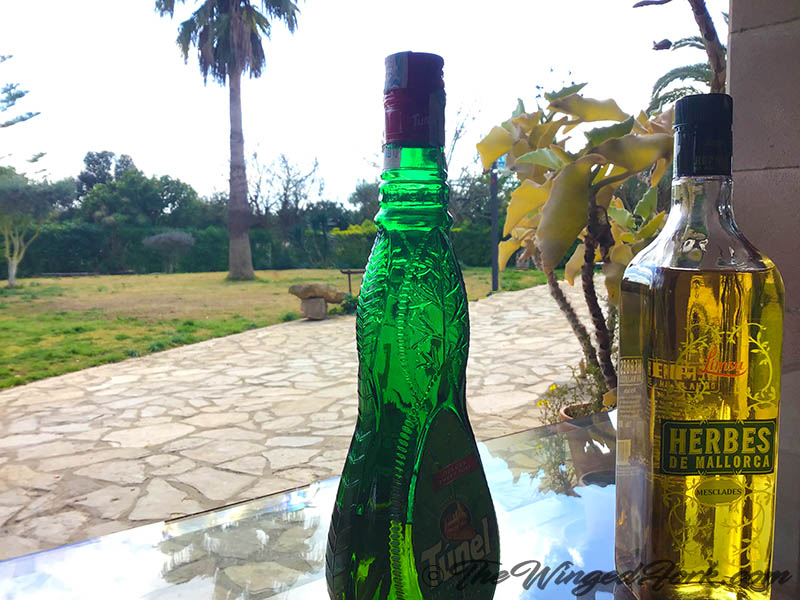
By Aaron from Abby’s Hearth
Herbes de Mallorca (Catalan) or Hierbas Mallorquinas is a liqueur made from herbs such as Anise, Fennel, Camomile, Mint, Rosemary and a few other aromatic plants.
This liqueur has a PDO (protected designation of origin) and can only be produced on the beautiful Balearic island of Mallorca that is home to the Cuevas del Drach.
The drink itself is typically served as a digestif (although a person I know wanted to treat it differently) and could be anywhere from amber to greenish in colour.
It comes in three different options Seca (dry), Mesclades (mixed) and Dulces (sweet). If you feel like you’ve had too much to eat then let Herbes de Mallorca be your re-treat.
Handy tip: When amongst friends (English speaking in particular) it needs to be pronounced correctly. Herbes – pronounced ‘Err bes’. My friend once offered me Herbes post-lunch whilst in the UK saying ‘would you like some Herbes’ (pronounced like ‘Herpes’ but with a b) and the noisy neighbours having a barbecue next door fell deadly silent.
42. Bermet or Fortified sweet wine in Sremski Karlovci, Serbian
By Allison from Sofia Adventures
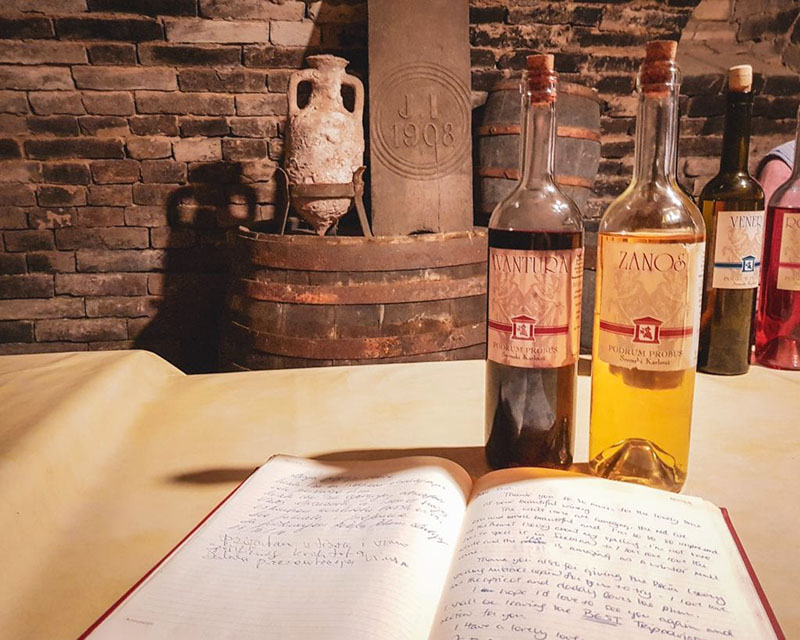
By Allison from Sofia Adventures
Bermet is a unique dessert wine that can only be found in Serbia. In fact, it is only made in the vineyards of a small town called Sremski Karlovci in the wine region of Fruska Gore, part of the Vojvodina region of Serbia.
Originally, it was made to be medicinal thanks to its strong alcohol percentage (around 18%) and its many medicinal herbs included (some 20+!), but it’s since become a beloved dessert digestif.
It’s fallen a bit out of favor in modern times, but it was extremely popular in the early 1900s when this region of Serbia was part of the Austro-Hungarian empire. In fact, it was a favorite of Viennese royals and was served both in the palaces of Vienna and even on the Titanic!
It’s made in both red and white versions with local Serbian grape varietals and the recipe is a secret in the hands of only a few local families in Sremski Karlovci. If you’re a wine lover, it’s definitely worth a detour from nearby Belgrade and Novi Sad to taste these unique wines.
Try it at the Probus Winery in Sremski Karlovci.
Živeli (pronounced ji-vel-ee)
43. Beer at a Brewery in Milwaukee, Wisconsin, USA
By Adam from Getting Stamped
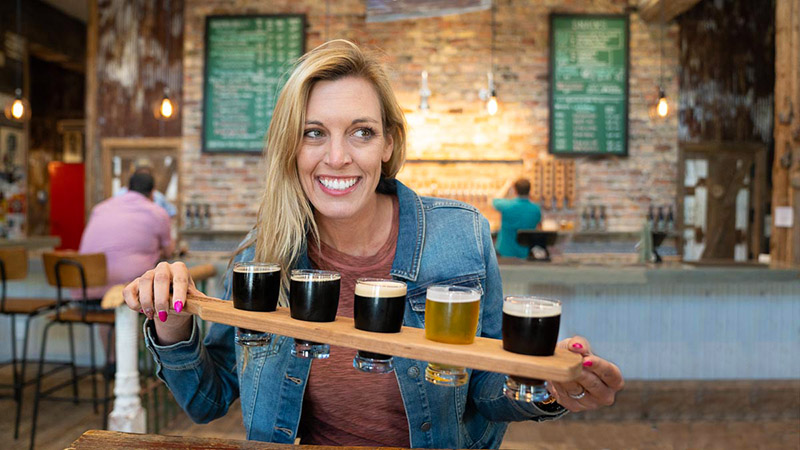
By Adam from Getting Stamped
At various points in history Milwaukee Wisconsin brewed more beer than any other city on the planet. Beer is what built this city and gave it the nickname “Brewcity”.
Natural resources like Lake Michigan and a large German immigrant population made for the perfect place for several major breweries to establish in Milwaukee. Nowadays the big breweries have either closed up or conglomerated, but that’s actually a good thing if you like great beer.
Amazing craft breweries have been popping up all over the city and repurposing old brewery buildings from the turn of the century and breathing new life into the beer scene in Milwaukee.
Here you can sip a PBR from the source or taste some craft beers at one of the wildly inventive breweries that have sprung up out of the ruins of last century’s beer barons.
A brewery tour is the best way to experience the brewing traditions in Milwaukee. You haven’t really been on a brewery tour until you done one in Milwaukee. If you only have time to take one brewery tour while in Milwaukee, make it MKE Brewing’s tour – and if you walk out sober that’s your own fault.
As a nod to Milwaukee’s largely German heritage many people still use “Prost!” when clinking glasses at the start of a drinking session.
44. Vietnamese Egg Coffee (Ca Phe Trung) in Hanoi, Vietnam
By Campbell and Alya from Stingy Nomads
Vietnamese Egg Coffee, locally called Ca Phe Trung is a wonderfully weird drink that is a must try when in Vietnam. We did a motorcycle journey across Vietnam for a month drinking it often, but Hanoi is known as the home of this strange concoction and the place to drink this egg brew. Half a cup of strong Robusta coffee is made in a tumbler glass by using a
Vietnamese Coffee drip filter. The locally produced robusta beans result in a strong bitter brew, this kind of bean is traditionally known for the production of instant coffee.
Egg yolks and sweetened condensed milk are whisked together to a thick almost custard like consistency. This is poured over the short bitter coffee to form a super thick cappuccino cap.
Be ready to drink the richest, sweetest, coffee drink ever going to drink ever. I am quite a coffee snob always hunting for great beans, but this strange drink with its tiramisu like flavours is delicious.
Cheers is Vô
45. Coconut Wine in Phillippines
By Ferna from Everywhere With Ferna
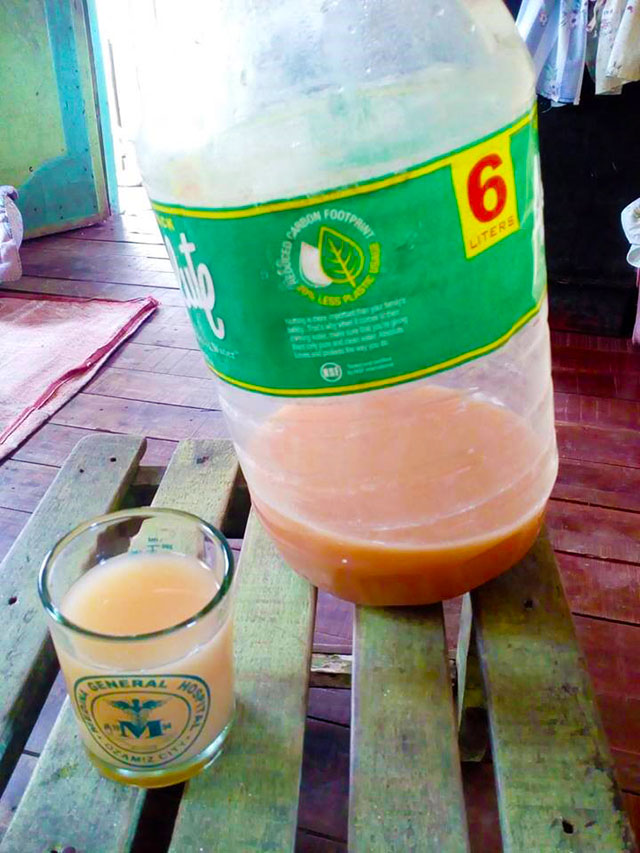
By Jillian C. Flores
“One of the drinks to try in the Philippines is the “coconut wine”, called “lambanog” in the national language and “Tuba” in Visayas and Mindanao Region of the country.
This is widely available in those two regions and locals especially men drink this early in the morning after it has been fermented.
The juice of the wine came from the coconut fruit or flower of the tree, same as like the green pod, it is on that portion that the local cut the green pod to get the juice that has a white color.
After which they mix the grounded bark to make the taste longer than 24 hours and make the color red. This is the reason why men drink this in the morning because it is the time that it is freshly harvested.
One can be able to see this in the Luzon area of the country and largely scattered in the Visayas and Mindanao area. I suggest to interact with the locals having a coconut wine, it will not make you drank on a first sip but definitely going to let you doze off on a few glasses.
There are also companies making coconut wine from this process and sold it elsewhere and export this as well just look for the “Lambanog” wine.
Tagay!
46. Irish Coffee in Ireland
By Christine from Ireland Travel Guides
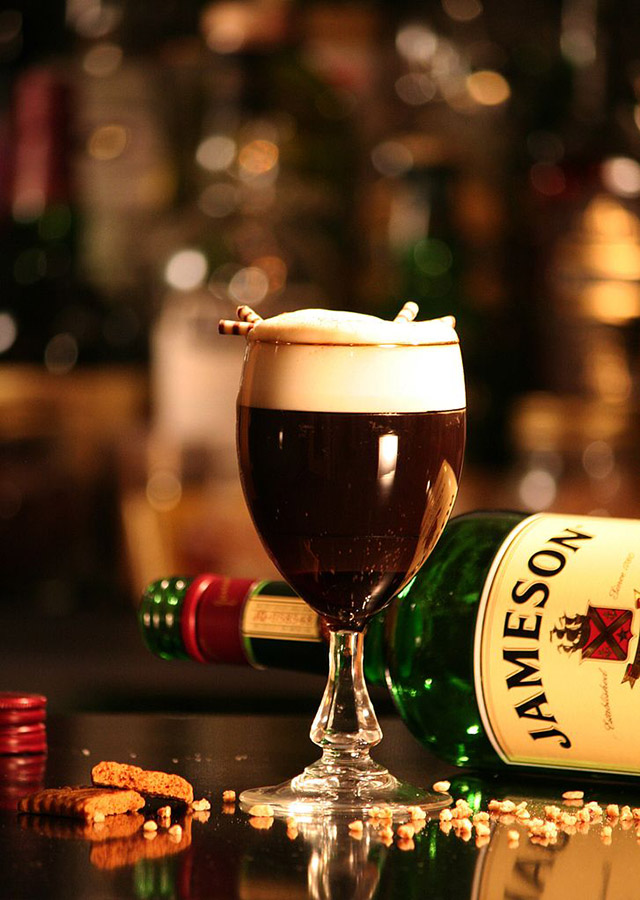
Pic by Marler from Wiki Commons CC BY-3.0
Irish Coffee is a combination of my favorite drinks – coffee and whiskey with whipped cream.
This world-famous Irish drink is said to have originated from the Flying Boat Terminal in Foynes Airport, Limerick where Joe Sheridan was working as bartender and chef in 1941.
One night, the Pan Am flight to New York turned back to Foynes due to the bad weather. Sheridan prepared coffee and decided to add whiskey on the drinks to help warm the freezing passengers. When asked if the coffee was made from Brazilian coffee, Joe Sheridan was quoted saying, “No, Irish coffee.”
Irish coffee has since then become a popular drink, and not only in Ireland but also around the world. However, Irish coffee is still the best to try in Ireland.
In Ireland, Irish coffee is a work of art and not just a coffee with whiskey that you can normally find in other countries. The drink is carefully prepared with the right amount of whiskey, syrup and strong brewed coffee with a dash of cinnamon and a layer of heavy cream.
So next time you’re in Ireland, don’t forget to say “sláinte”.
47. Jenever or Genever in Netherland
By Karen from Wanderlustingk
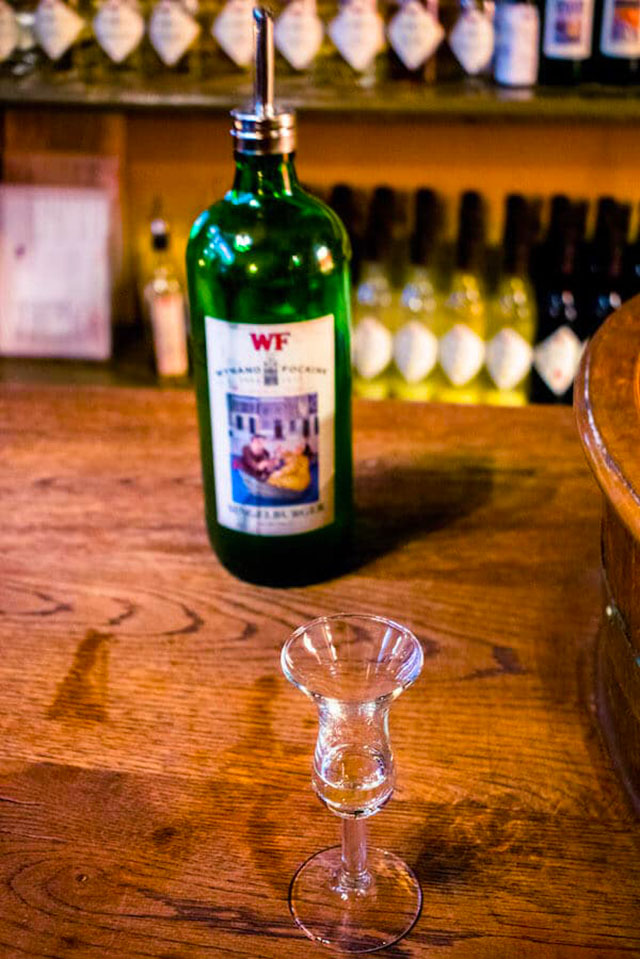
By Karen from Wanderlustingk
One of the best drinks to try in the Netherlands is jenever. It is sometimes spelled genever in English, however you say it with a soft y sound instead of a g to start off the word when saying it in Dutch.
This drink is made with juniper berries and it’s typically served straight in a glass specifically made for jenever. You can drink it by itself or as a chaser for a beer.
You can often find jenever at small bars across the city, but it’s best to try jenever at a jenever tasting room in Amsterdam which you can find around the city of Amsterdam.
These tasting rooms have an old-world feeling and just make the whole experience even more noteworthy. Don’t skip it while visiting the City of Amsterdam. Jenever is considered to be the precursor to Gin as Gin was inspired by a similar recipe!
Before taking a sip, be sure to say “Proost!” This is the word in Dutch for Cheers.
48. Pol Arrack or Sri Lankan Arrack in Srilanka
By Yulia from Thats What She Had
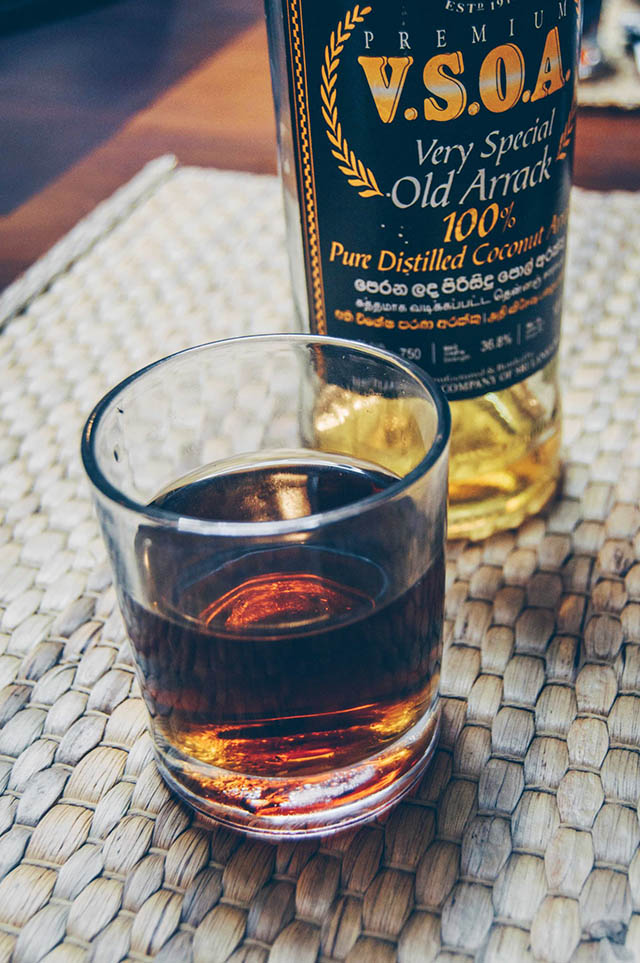
By Yulia from Thats What She Had
A bottle of wine that costs three-four euros in Europe will easily cost you twenty in Sri Lanka thanks to high import taxes.
When I first moved to the island through a student exchange program, myself and other interns had to resort to cheaper local spirits during our crazy parties. Arrack was the drink of choice for poor exchange students and most locals.
Sri Lankan arrack is made using extract of coconut palm flowers, or toddy as it’s called locally. Toddy-tapper is an actual profession which involves men walking on tight ropes between palm trees to collect the flowers and extract the nectar.
Toddy is fermented naturally, distilled and aged in barrels. You can drink arrack on its own — go easy, though, alcohol content is 40% — or use it to mix cocktails.
One important tip: when buying arrack make sure to get a high-quality brand from a trusted vendor as some cheaper brands mix in neutral spirits.
Some of the best brands include Ceylon Arrack and Mendis, and you can get them at local spirit shops or at the airport Duty-Free shops.
Cheers!
49. Te or Ceylon Tea in Sri Lanka
By Yulia from Thats What She Had
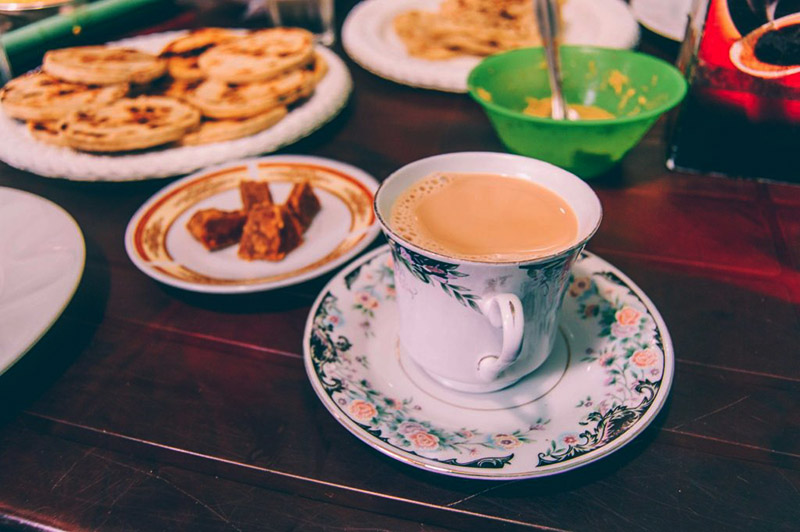
By Yulia from Thats What She Had
The one drink you absolutely must try in Sri Lanka is tea, after all the island is home to numerous tea plantations and one of the leading exporters of black tea in world. There’s a million different ways to have your tea in Sri Lanka.
First of all, you can have it like locals: with a lot of sugar and milk. If you find yourself in a home of a Sri Lankan family, tea will be the first thing they’ll offer.
Important thing to know: the amount of sugar in tea is directly proportional to how happy the host is to see you. And Sri Lankans are really hospitable, so much so you are likely to have a sugar shock (as I call it) after the first sip.
Secondly, I would try pure Ceylon black tea as it is, without any additions. That’s the best way to experience the real taste of tea and appreciate its quality.
When you travel in the hill country, you’ll be passing by a lot of tea plantations where you can stop to take a factory tour and try samples of multiple teas.
Third and most exciting way is to have tea-based drinks at a tea lounge. One of my favorites is Dilmah tea lounge in Colombo (they have two locations in the city).
They offer the most amazing tea cocktails, mocktails, my favorite t-Kitsch (strong black tea with condenced milk and spices), and even desserts, like earl grey ice cream.
Cheers!
50. Chocolate Caliente de Oaxaca or Oaxacan Hot Chocolate in Mexico
By Claire from Claire’s Footsteps
Curling up with a Oaxacan hot chocolate on a cooler night in the city was one of my favourite things to do while living in the city.
The cocoa is made in the surrounding mountains, and is broken up into a gritty paste and then mixed with cinnamon and sugar before being whisked together with boiling water to create a delicious hot sweet drink.
Chocolate is often enjoyed in its solid form as well, mixed with cinnamon and almonds and sold in many of Oaxaca’s chocolatiers.
Sampling either the hot chocolate or solid stuff is one of the best things to do in Oaxaca, due to the authenticity of its production and the unique flavour that Oaxaca chocolate has.
Any specific place to have it: any café in Oaxaca!
Saludes!
51. Borovička [boh-roh-veech-kah] in Slovakia
By Peter from I Heart Slovakia
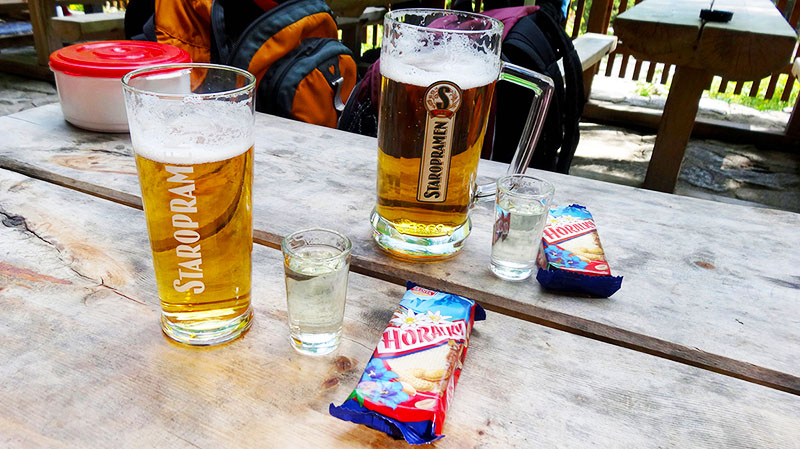
By Peter from I Heart Slovakia
Similar to gin but with a more complex herbal flavor, borovička is a traditional Slovak spirit made from juniper berries and Slovakia’s national alcoholic drink.
The spirit is a Slovak specialty, typically 40% alcohol, tastier than vodka, and rarely found outside the country, except perhaps in Czechia.
It’s called juniper brandy in English but no one calls it that. It’s just a descriptor; the Slovak word is always used.
Slovaks drink borovička at celebrations like weddings, to greet guests with or to part with them, or to kick off a drinking or socializing get-together, typically with a beer back.
My favorite way to imbibe borovička is at the end of a long hike at a mountain chalet. First, I have a cold beer, which, though not the best way to hydrate, is the most refreshing reward.
Next (or alongside the beer) comes the chocolate-glazed wafer with peanut filling called Horalky. The quick calories compacted into a neat little bar replenish your energy to keep you going.
Finally, a shot of borovička livens the spirit tired from overexertion. For that reason, I call it the Slovak energy drink, on par with tequila.
Na zdravie! (Nah-zdrah-vye)
52. Elma Cayı (pronounced el-ma cha-ey) or Apple Tea in Cappadocia, Turkey
By Crystal from Castaway with Crystal
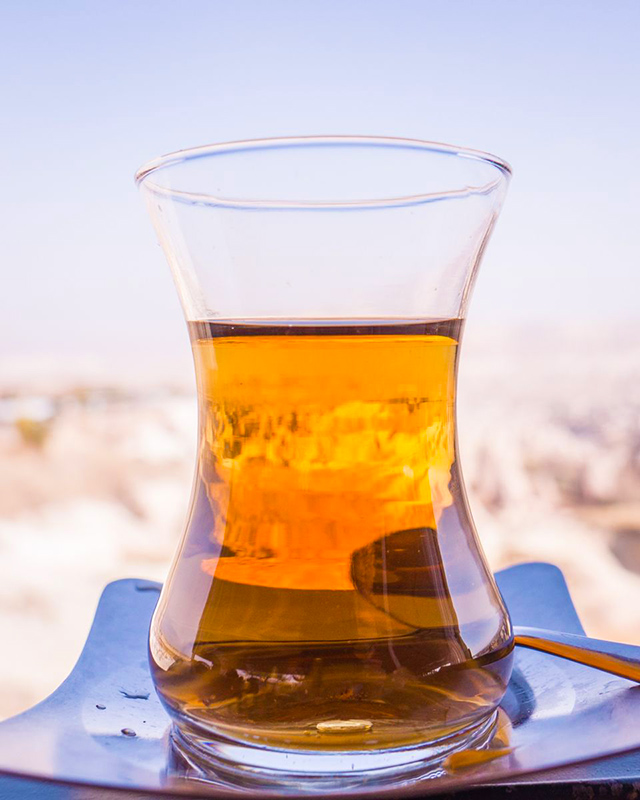
By Crystal from Castaway with Crystal
Possibly Turkey’s most famous drink is their liquid gold Apple Tea. You will see it drunk everywhere from restaurants to rug stores. Wherever you go, you’ll be sure to see Turkish people conversing over a warm apple tea.
As we walked the streets of Cappadocia we had storeowners, bus-boys and random passers-by offering us apple tea wherever we went. The drink became such an integral part of our Turkish adventures that I started to crave it more and more. Not stopping for a coffee break on a long day sightseeing, but stopping for apple tea instead.
Our favourite place to have an apple tea was any restaurant or café that overlooks the beautiful fairy chimneys of Cappadocia (don’t worry – there are hundreds of places you can do this in Cappadocia!).
If you want to experience true Turkish hospitality (and make a new friend) simply say ‘yes’ the next time a Turkish local offers you some tea!
Serefe! (pronounced she-re-FE)
53. Port and tonic – P&T (Porto Tónico) in Portugal
By Kathryn from Travel with Kat
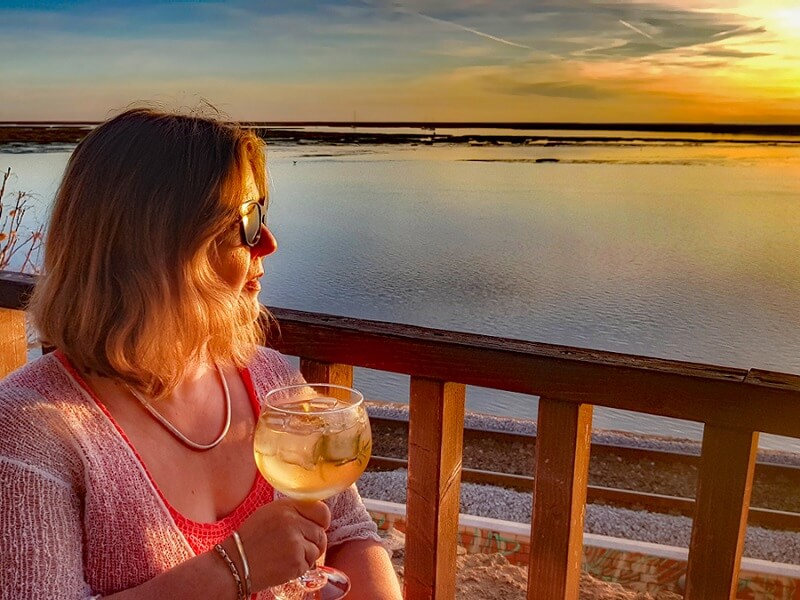
Until a recent trip to Portugal I’d never heard of white port but served with a quality tonic water and a slice of orange or perhaps a sprig of rosemary, it is a superb and refreshing combination.
White port is a fortified wine made from white grape varieties, such as Malvasia Fina, Rabigato and Viosinho, grown in the Duoro Valley in Portugal.
If you like G&Ts you are sure to like Porto Tónico or should that be P&T? It has a similar sweetness but with two advantages, white port tends to cost less than gin and it has fewer calories!
I first tried it in a bar looking out to sea in Faro in the Algarve as the sun went down — a magical memory. Port and tonic is the perfect drink on a hot day as it’s light and refreshing and not too alcoholic.
The best place to drink it is at O Castello, Faro, Portugal.
Felicidades!
54. English Sparkling Wine
By Kathryn from Sussex Bloggers
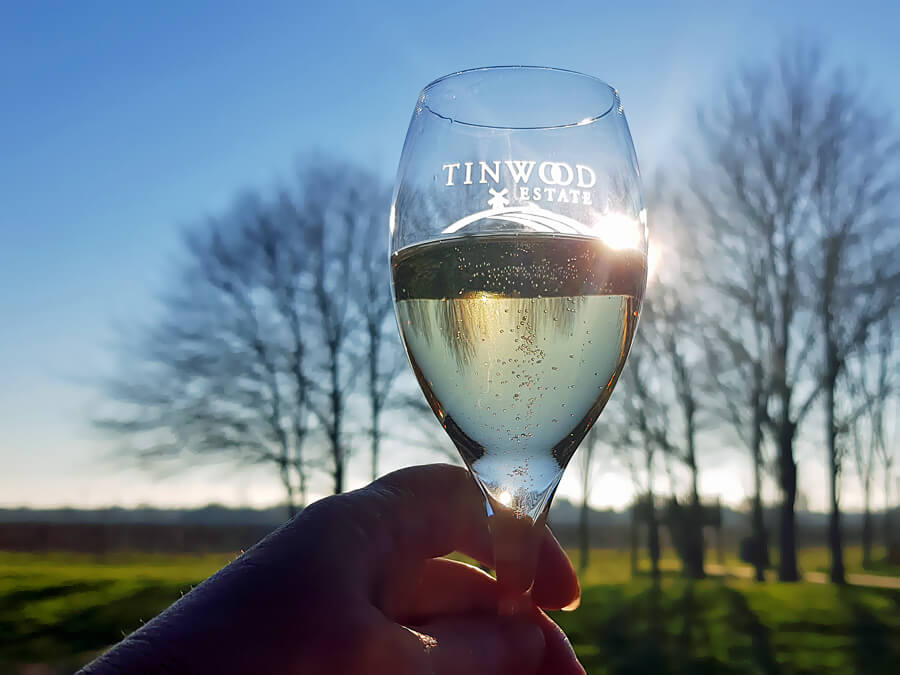
I’ve heard a lot about English sparkling wine in recent years, including it being voted the favourite Brut in a blind tasting against some Champagnes.
With a similar climate and chalky well-draining soil, the South Downs of England are a particularly well-suited location for the vineyards and some Champagne wine estates have invested in land here.
When I visited the Tinwood Estate in West Sussex, I found not one but three great sparkling wines. A light and crisp Blanc de blanc made entirely from Chardonnay grapes.
A fabulous Brut, that combines Chardonnay with Pinot Noir and Pinot Meunier, as well as an excellent Rosé Brut from the same three varieties but with the emphasis on the Pinot Noir grapes.
At the foot of the South Downs, the vineyard is in a lovely location by the sleepy village of Halnaker which predates the Doomsday Book. And it’s a short walk to a nearby restored windmill that is seen in the logo for the estate. A visit here makes a lovely day out.
To taste this sparkling wine, head on over to the Tinwood Estate in Halnaker, Chichester, West Sussex, England.
Bottoms up!
So many amazing drinks from different cultures to add to my must-try list. What about you?
Other Posts You Might Like
- What to do in North Shore, Oahu, Hawaii
- Short trips to take near Dublin
- Rio de Janeiro attractions
- Ramzan/Ramadan food in Mumbai
- Visiting Menton in France? Do this
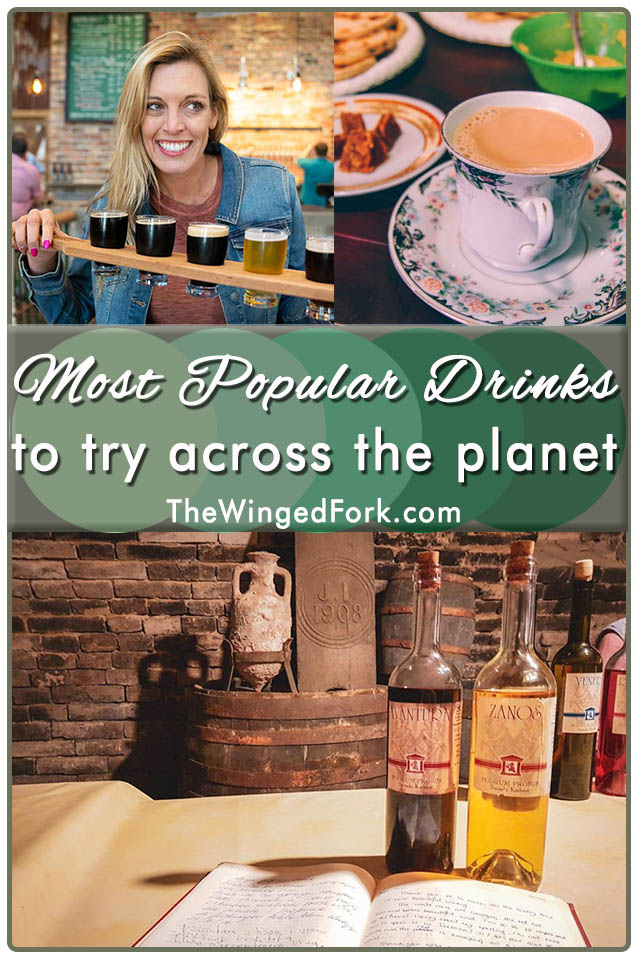
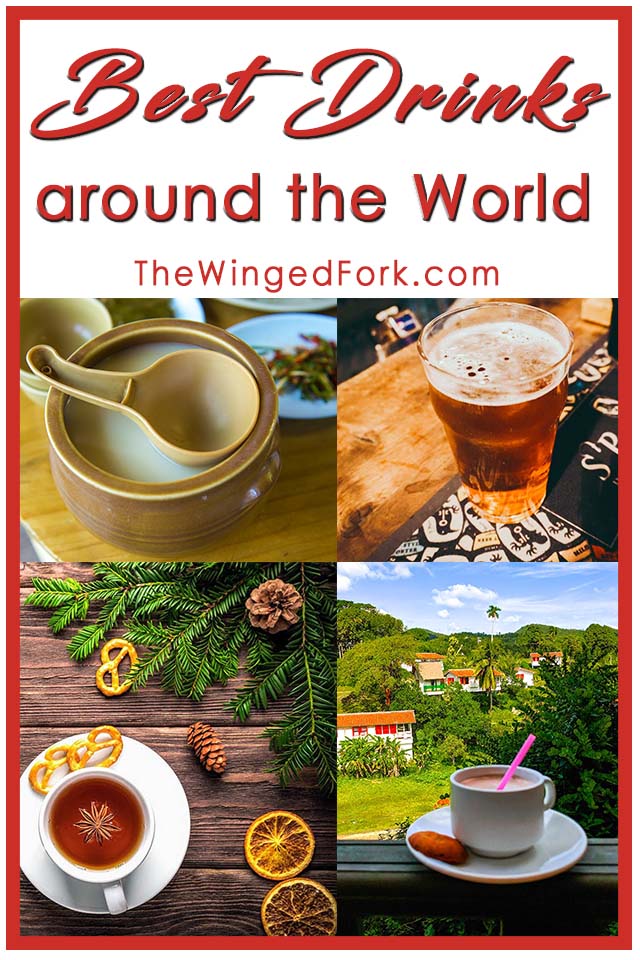
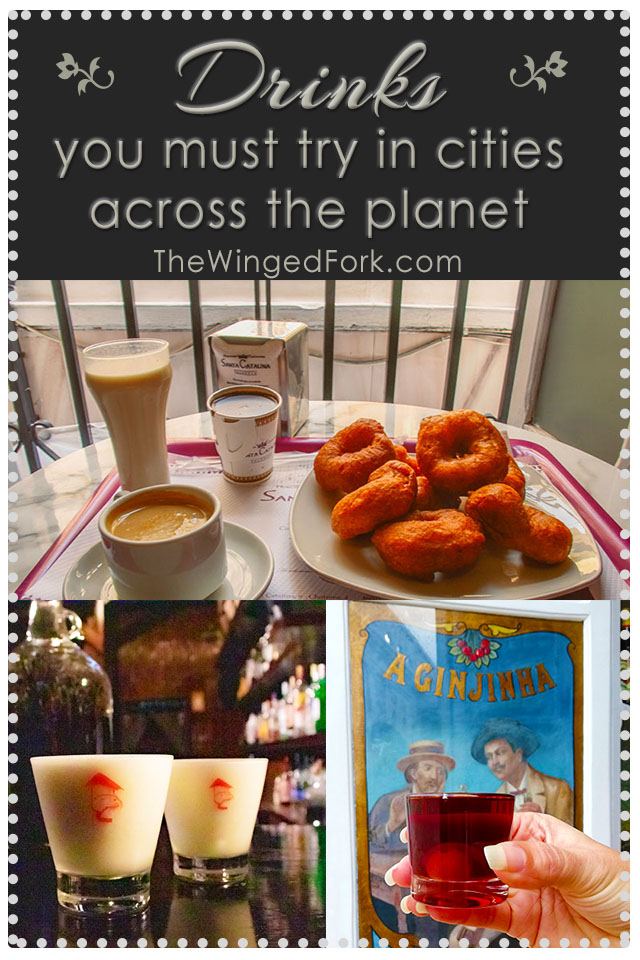
And a PS. If you know of a drink or beverage that must be added to this list, just comment and let me know. Or if you want to add it to this list yourself, just email me at abby@thewingedfork.com with a writeup and pic and I may just add it in. Cheers!
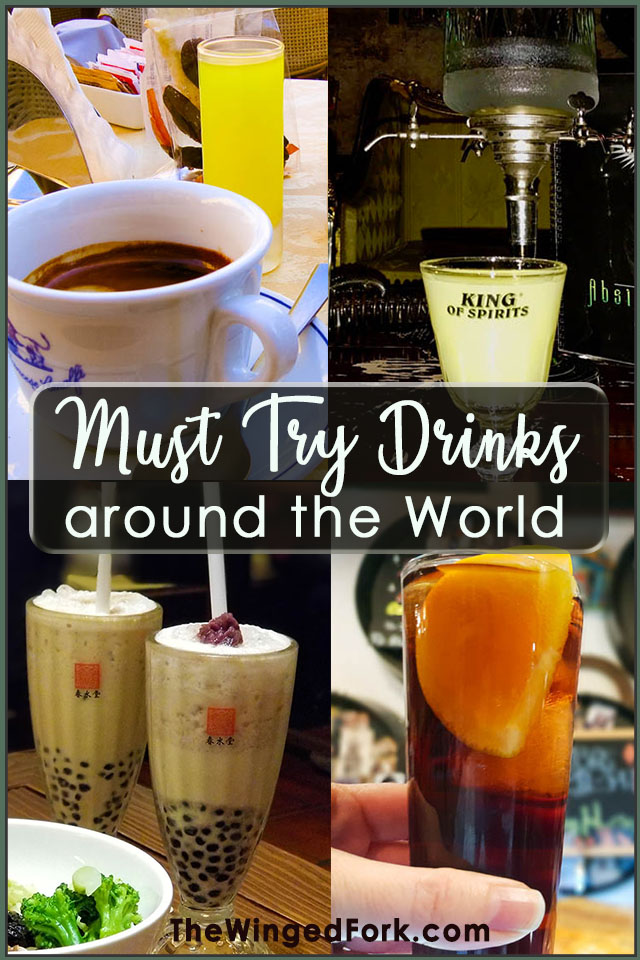
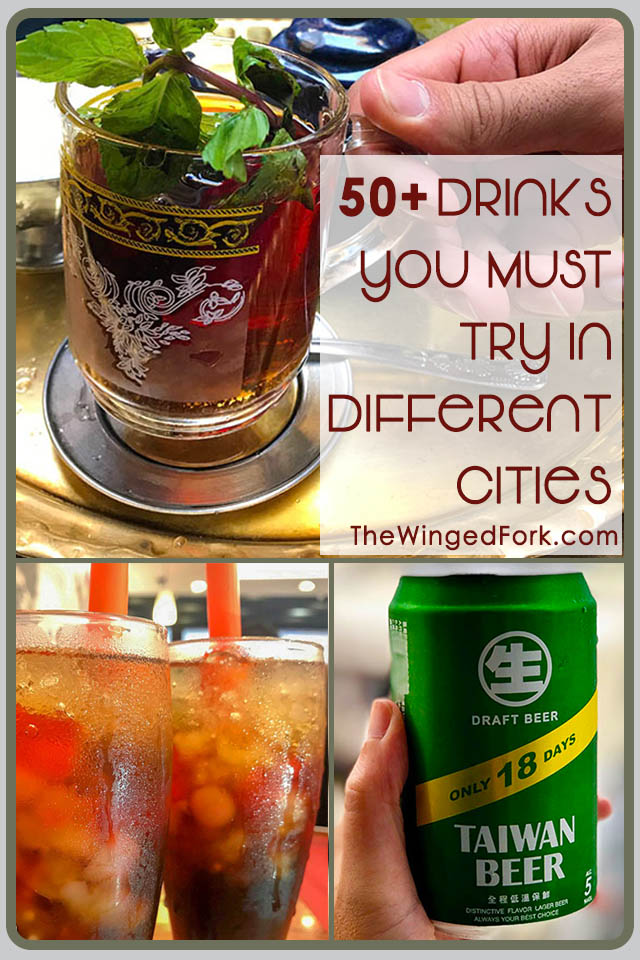
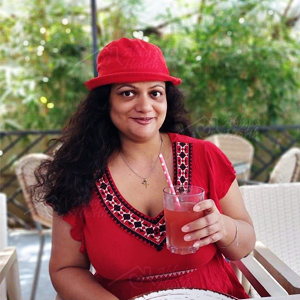
I’m an East Indian foodie and travel blogger from Bombay, India. I’ve travelled across parts of Europe and Asia, and love writing about my experiences with people and cultures. And naturally, I love food, wine, and travel, and have an endless bucket list of places to go to, and experiences I must blog about.
I also love baking and experimenting with food, with a little help from my family. If you must know, my favorite things are nice rainy days, the smell of cakes in the oven, playing in the snow, glasses of wine, and dark chocolate.
More info about me here!
